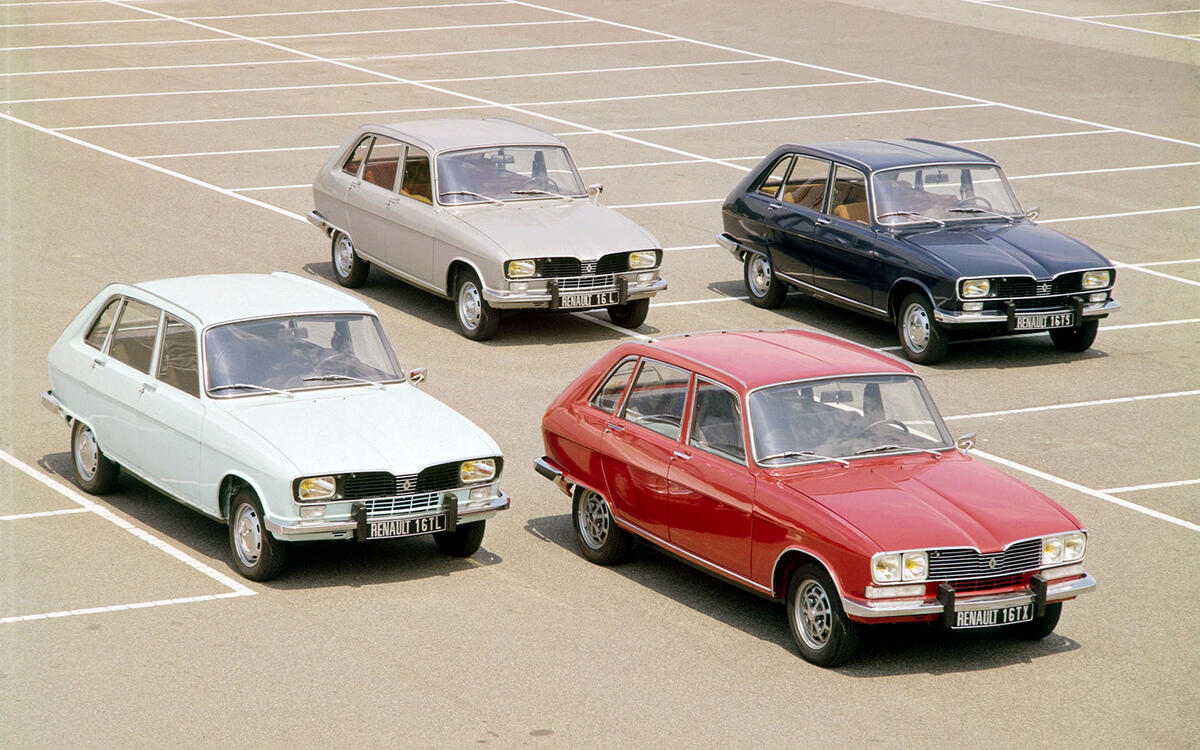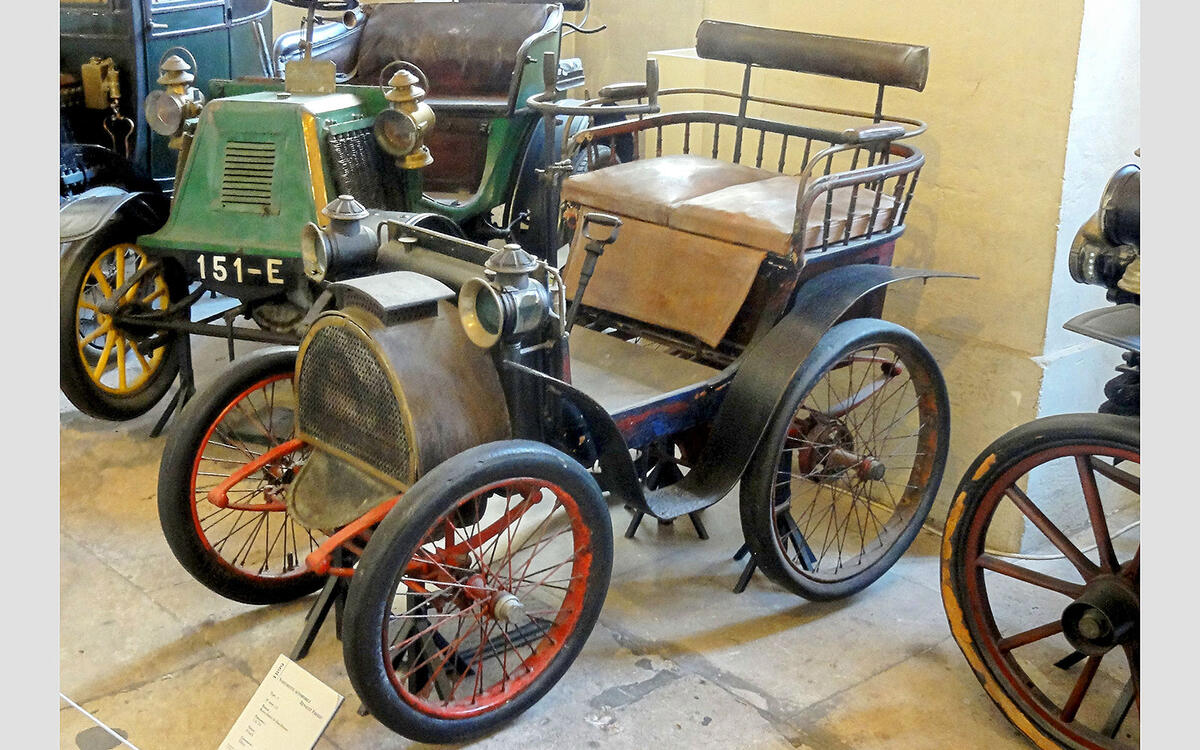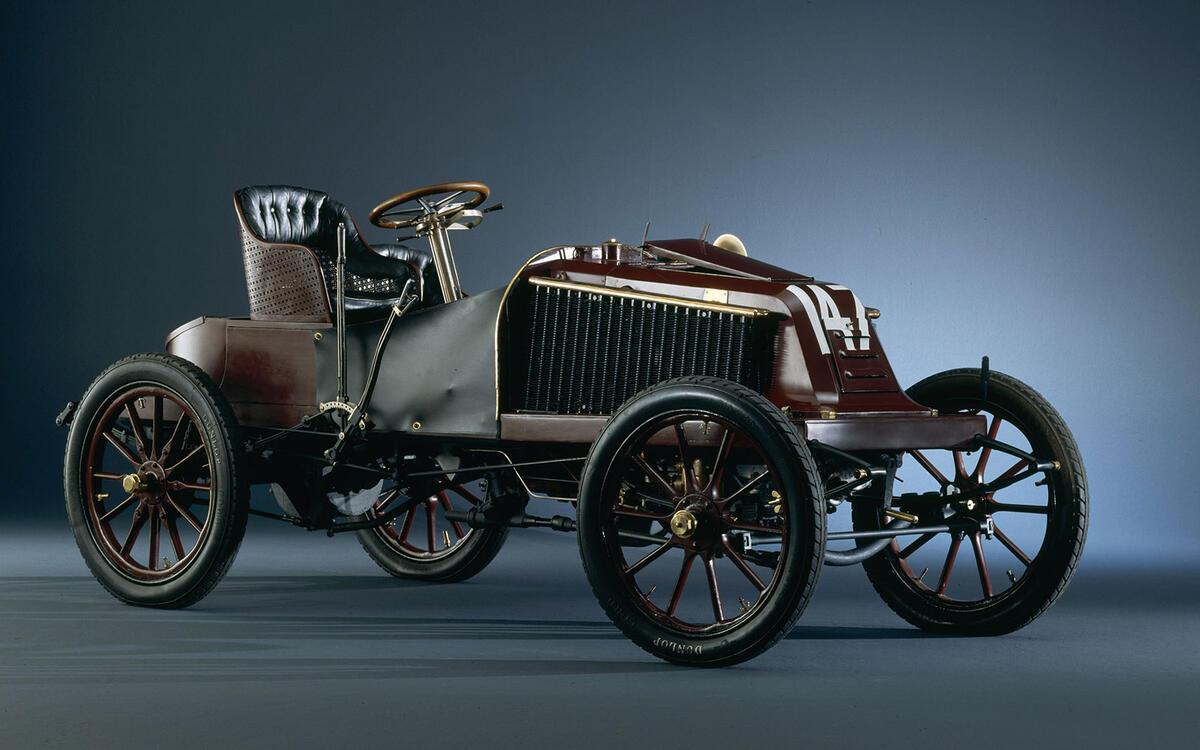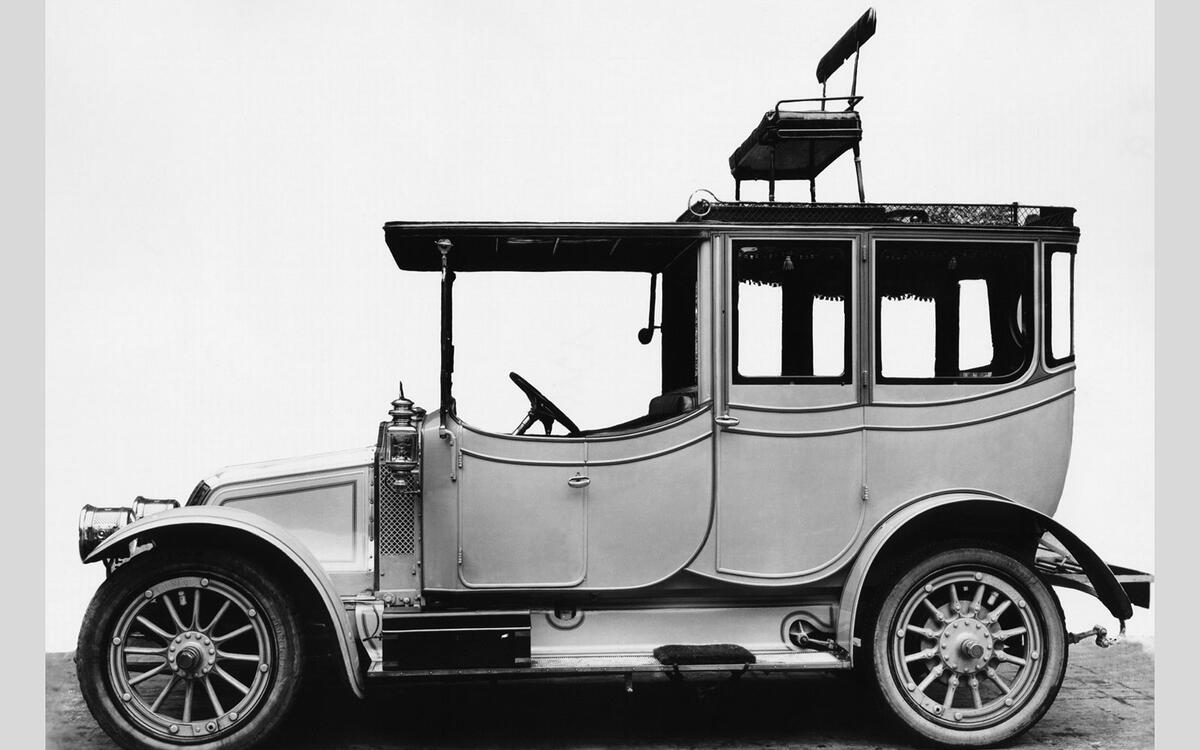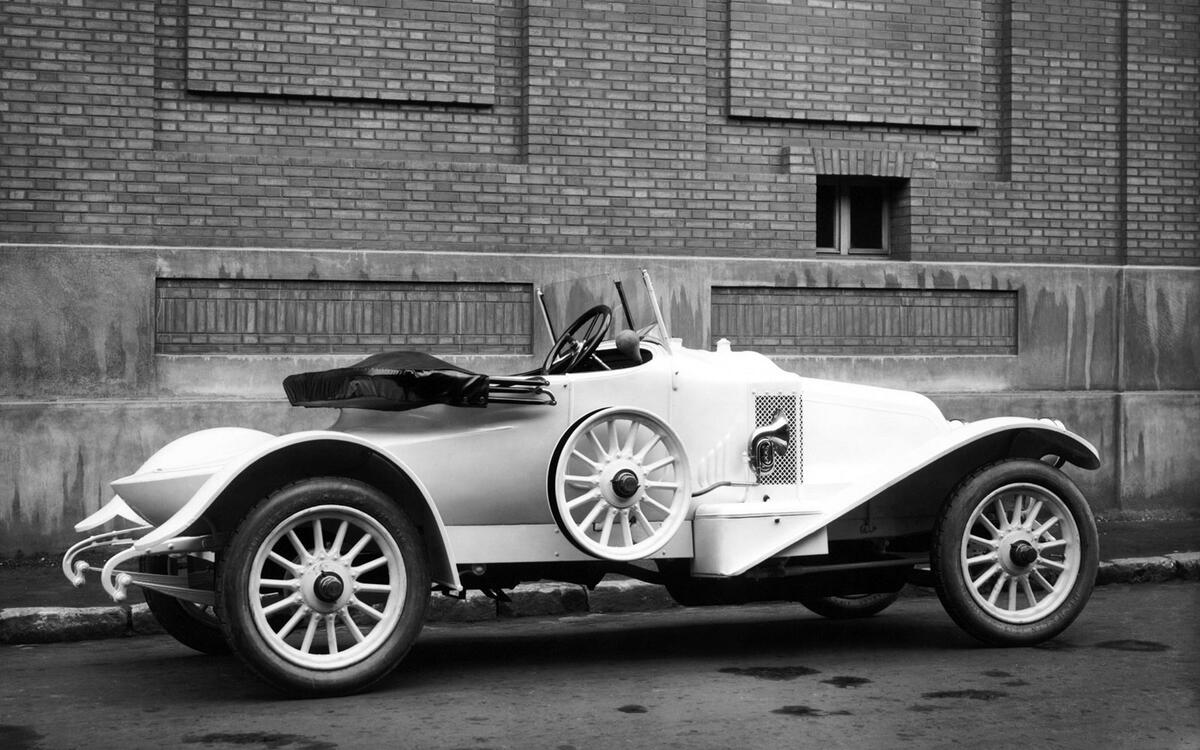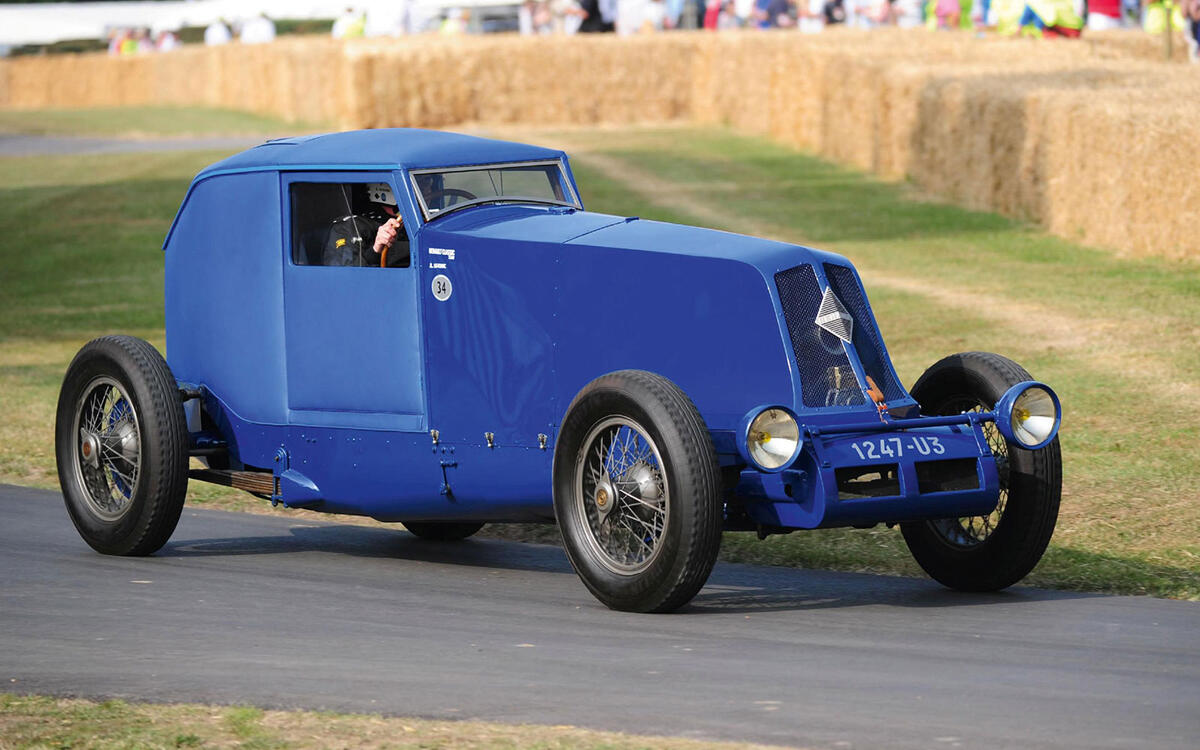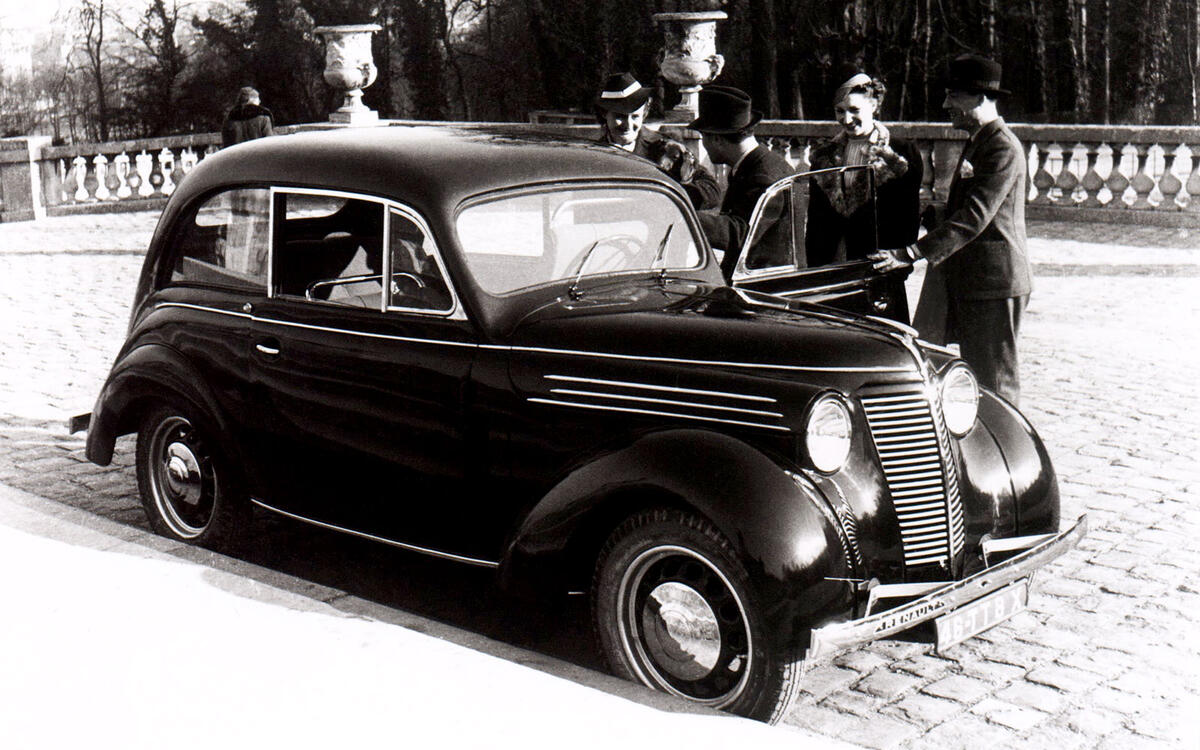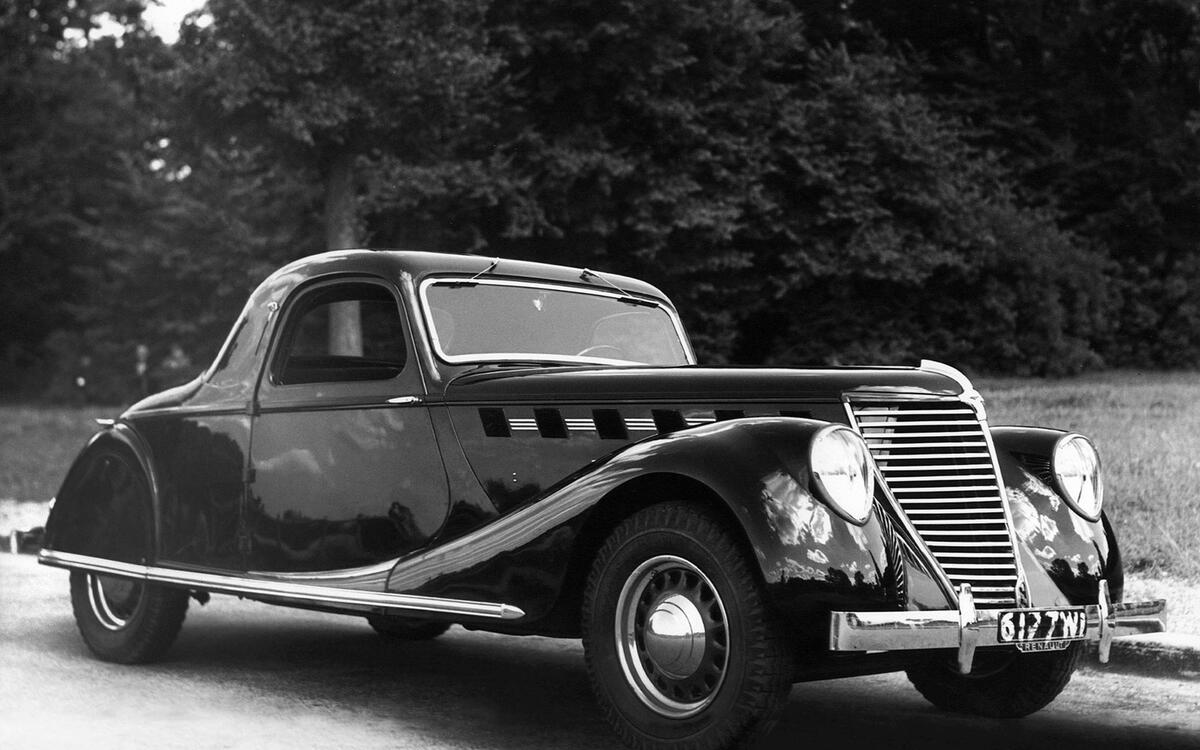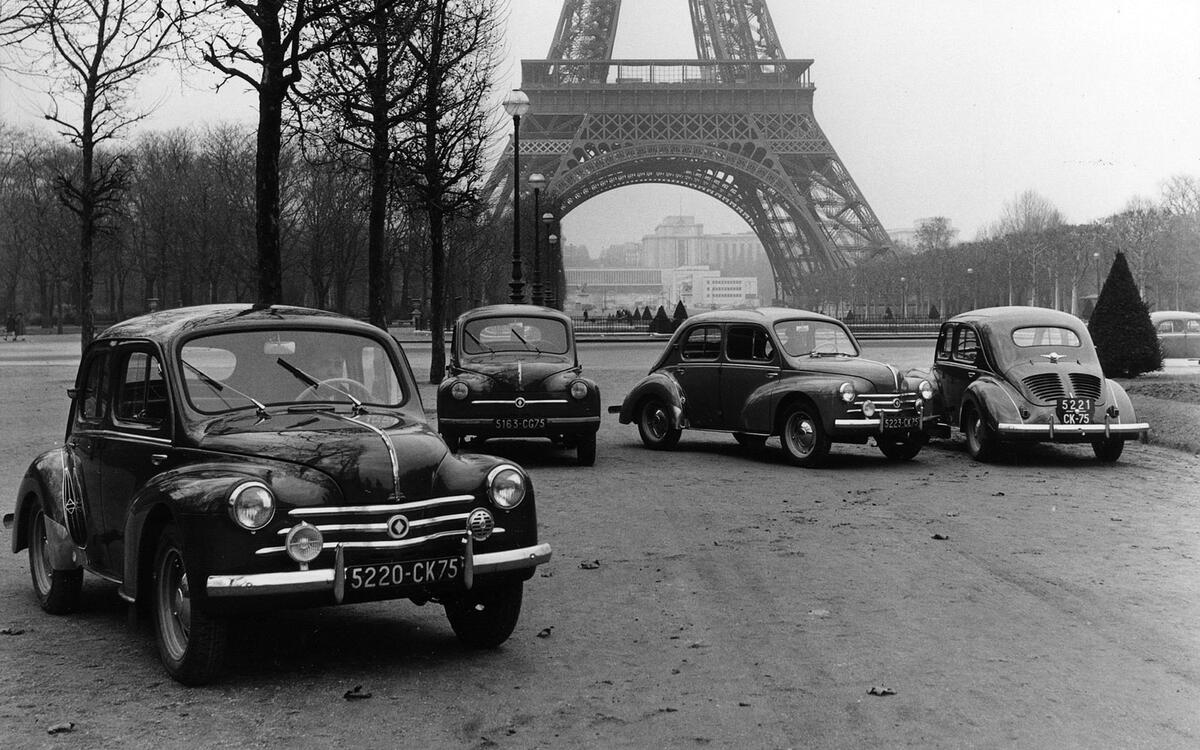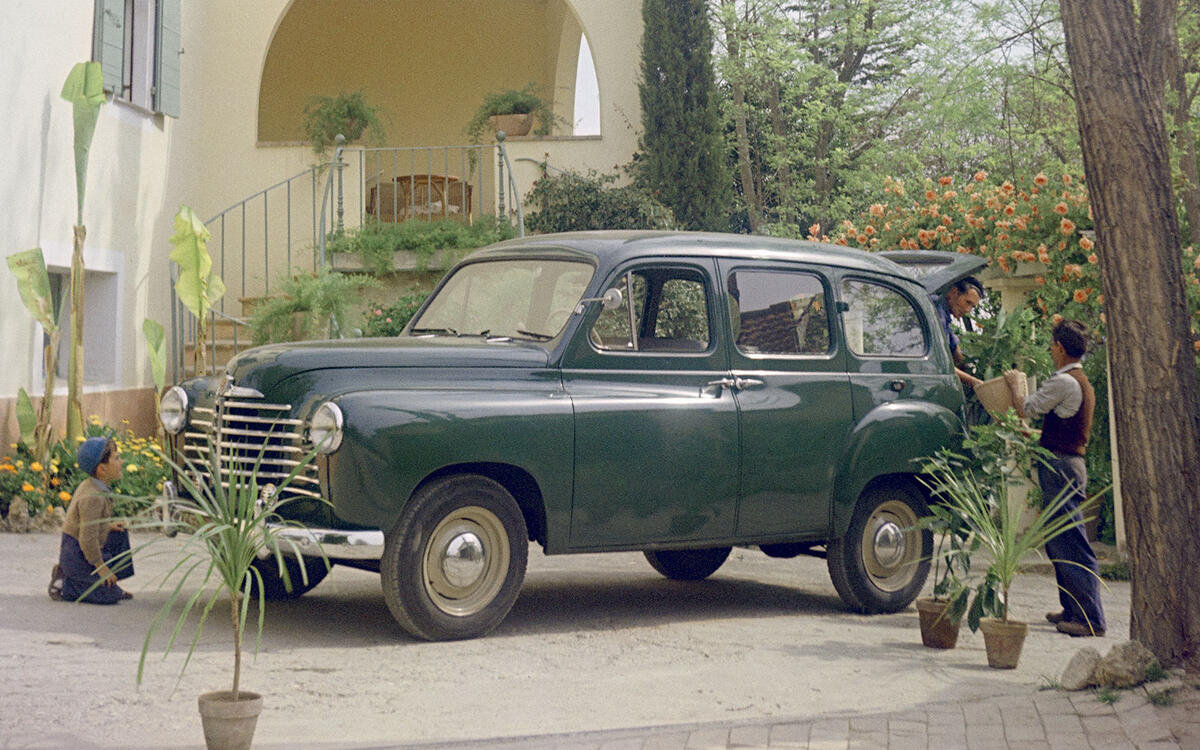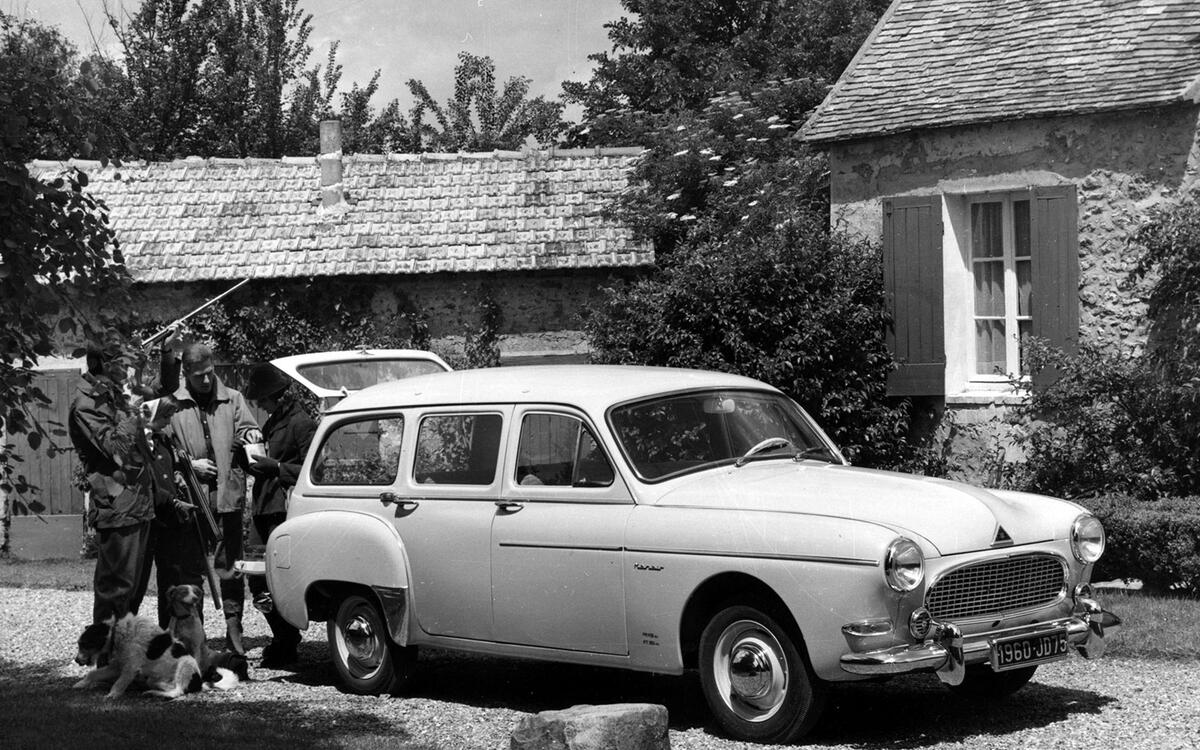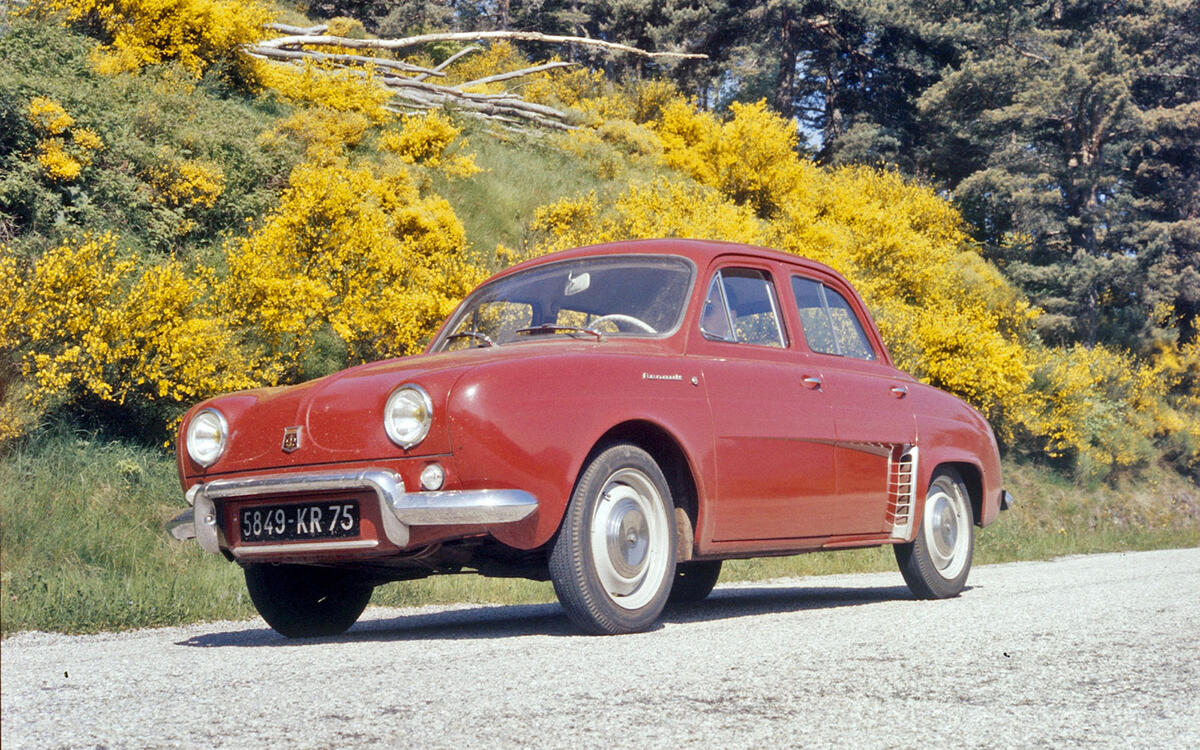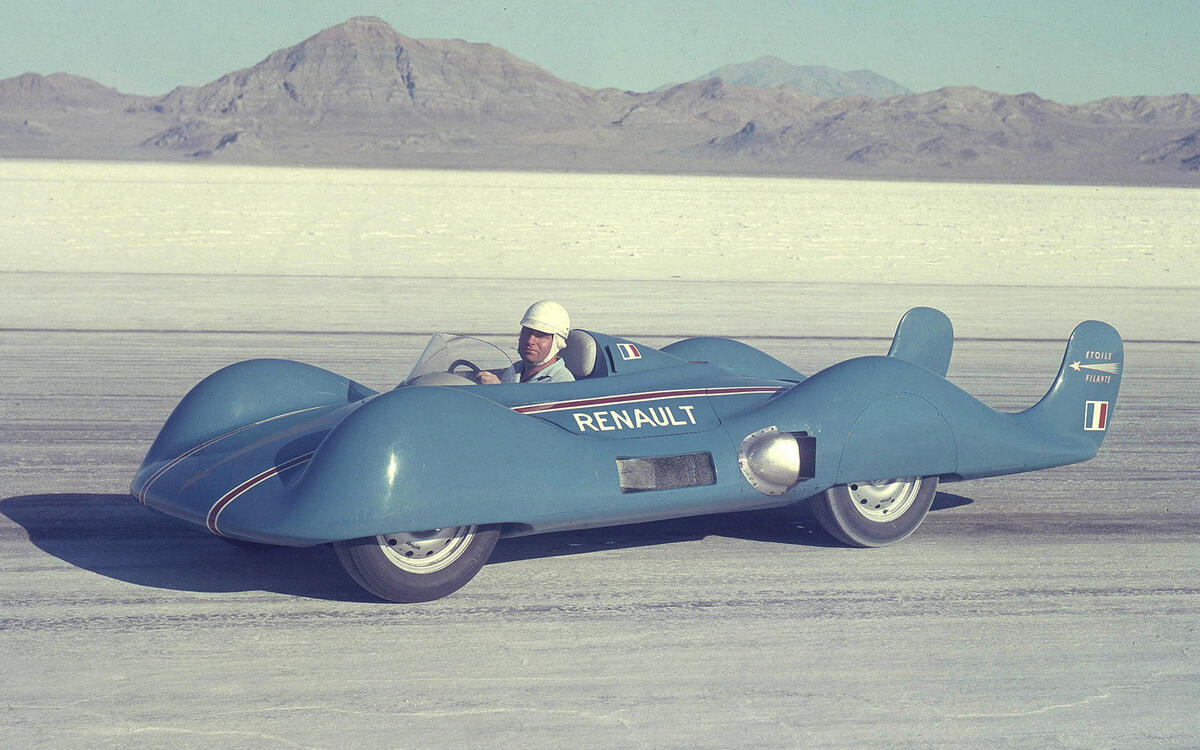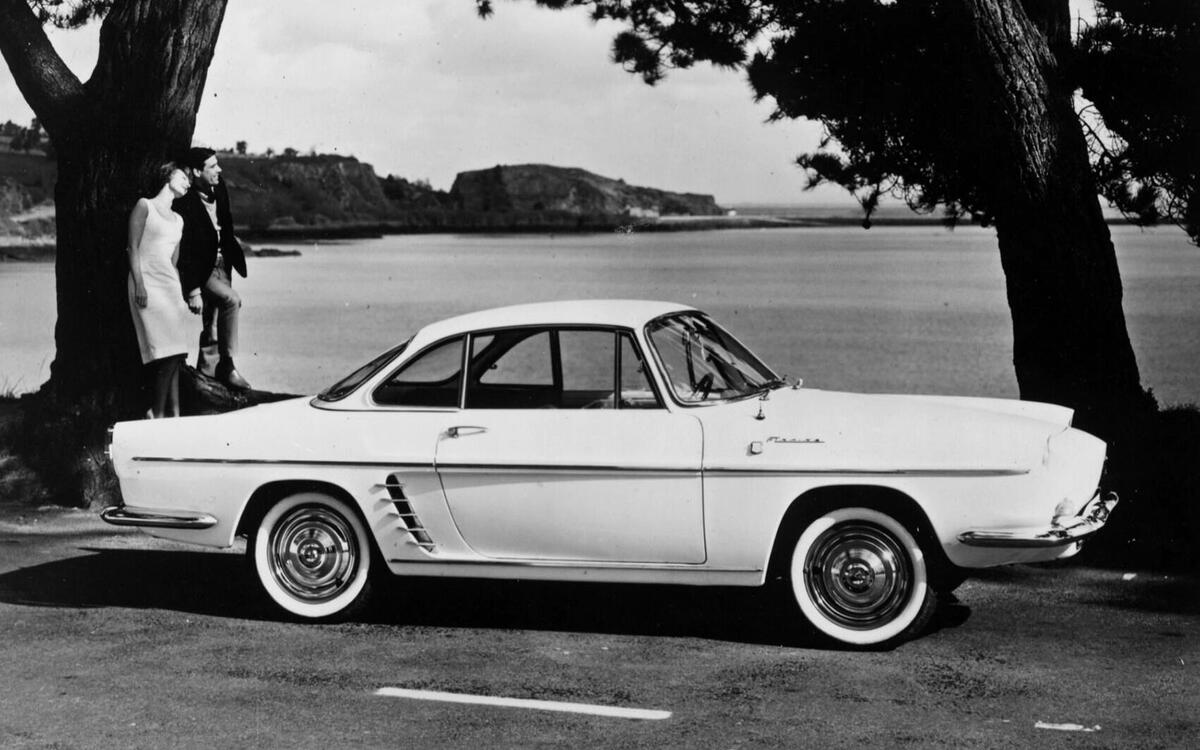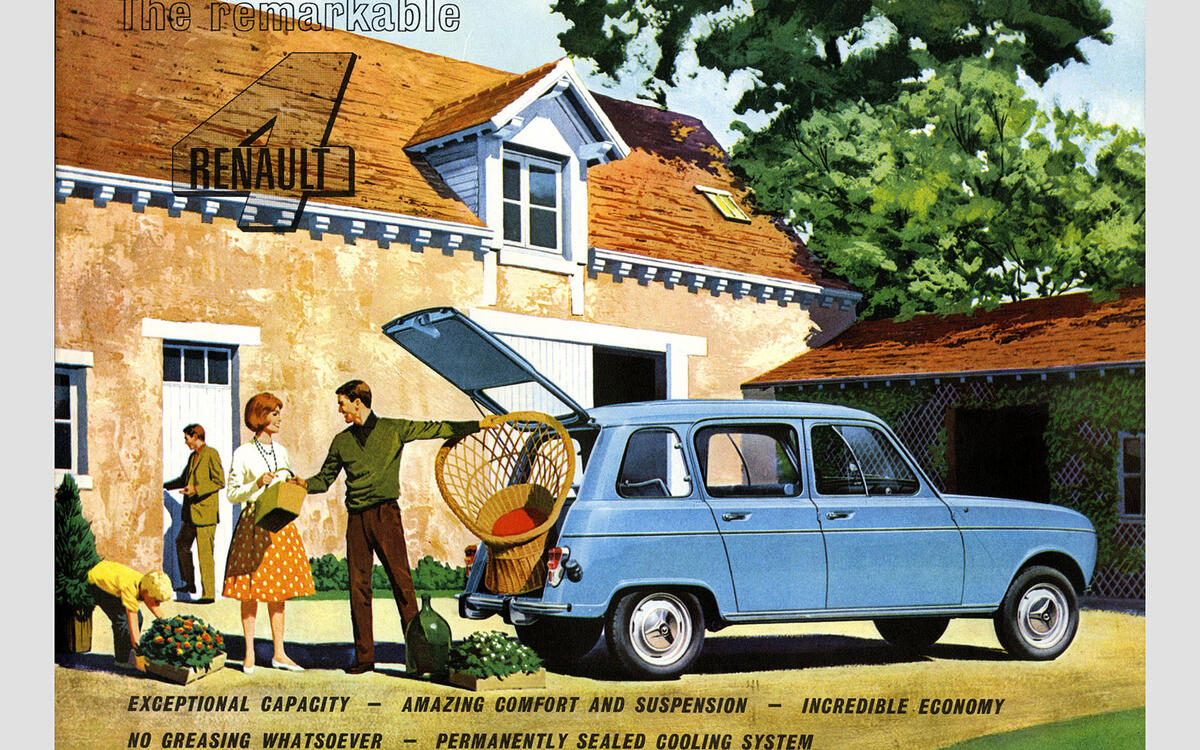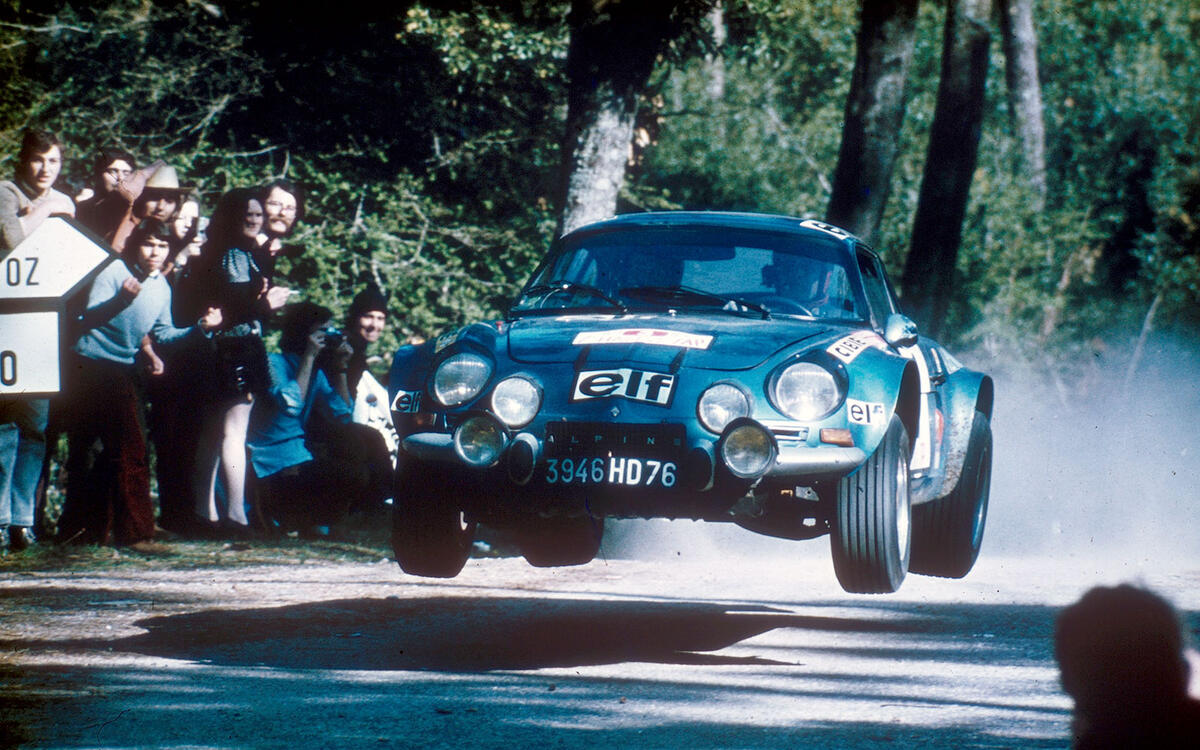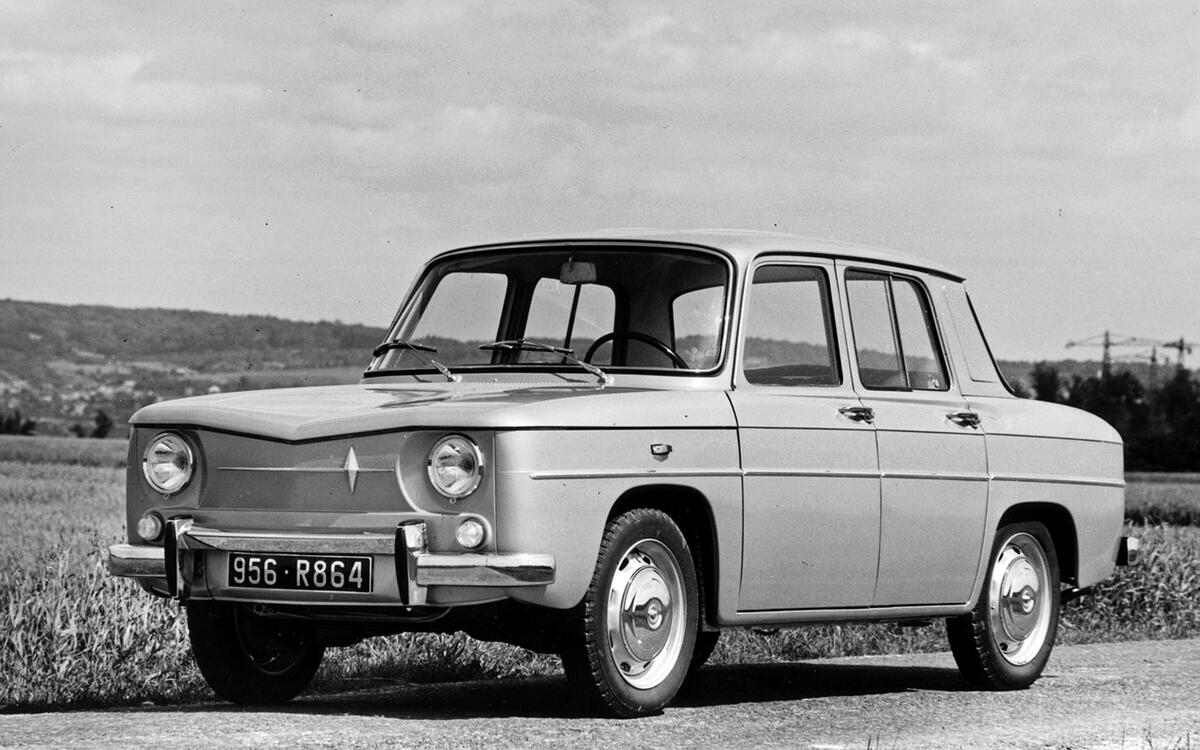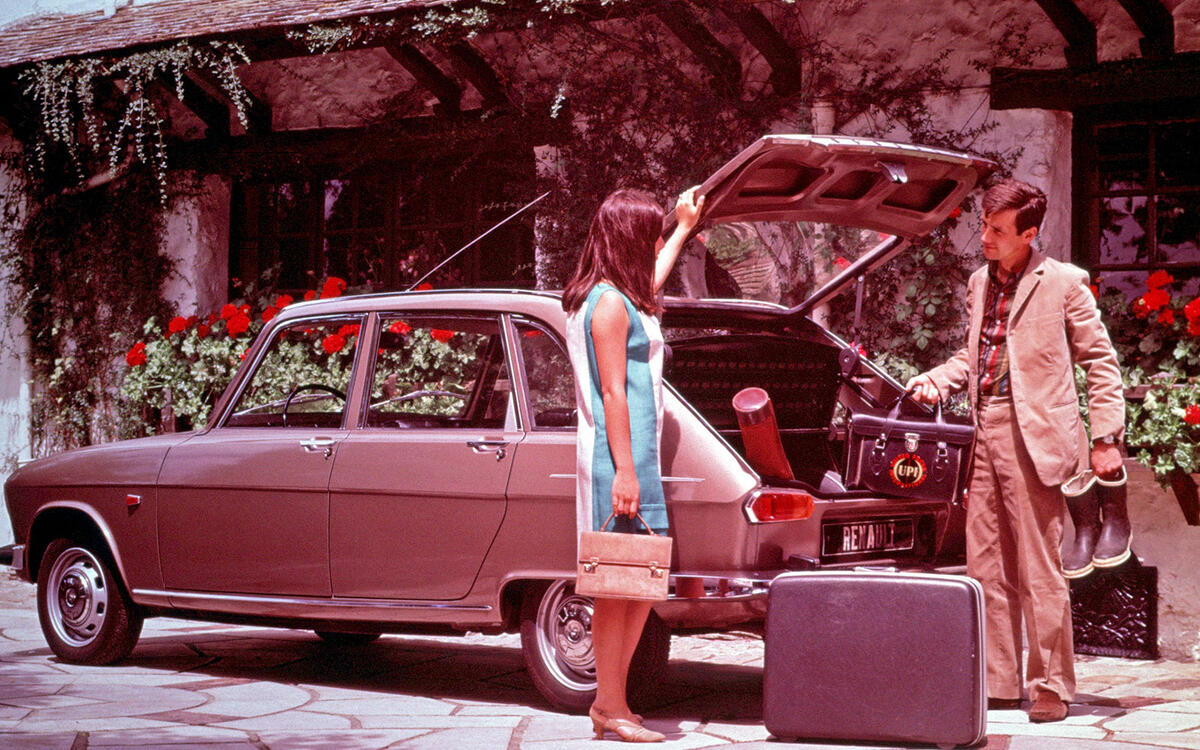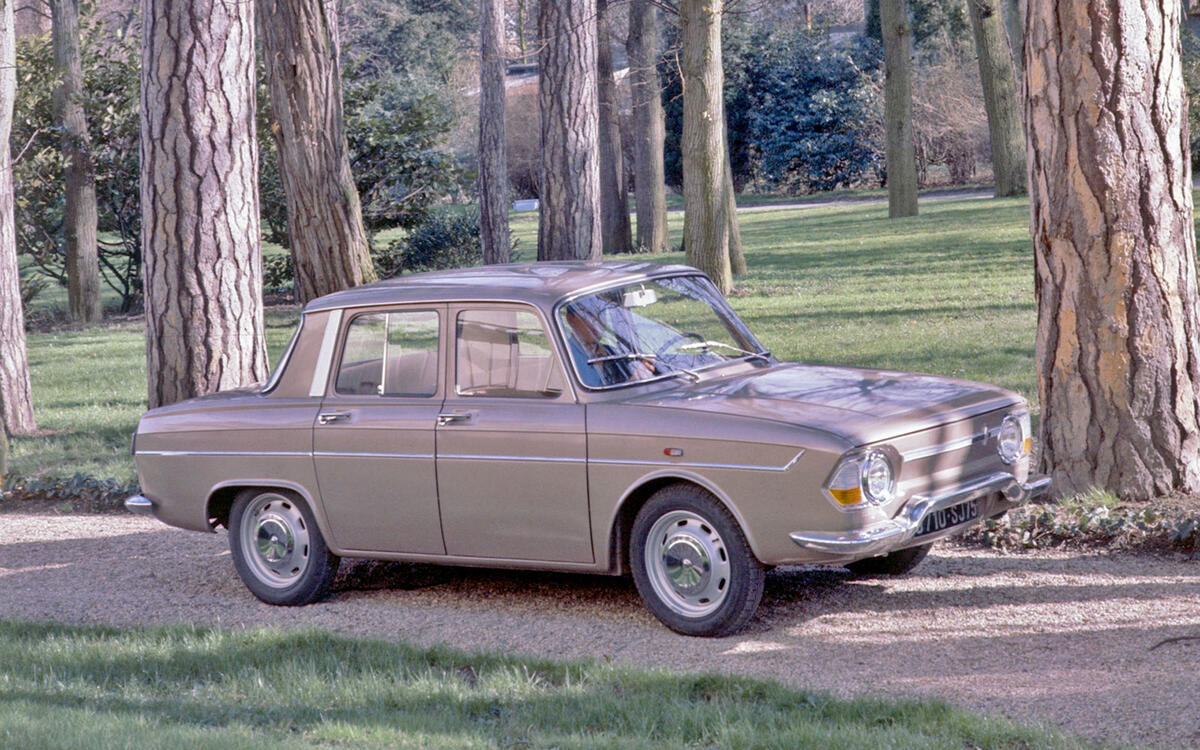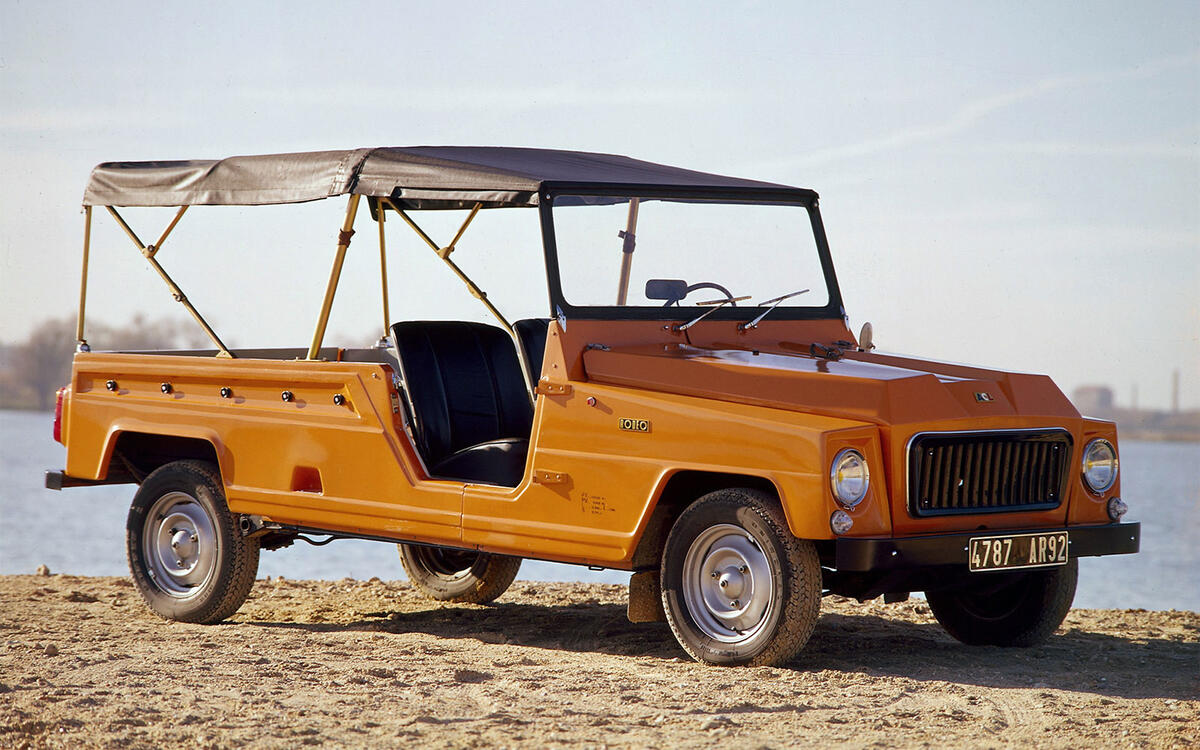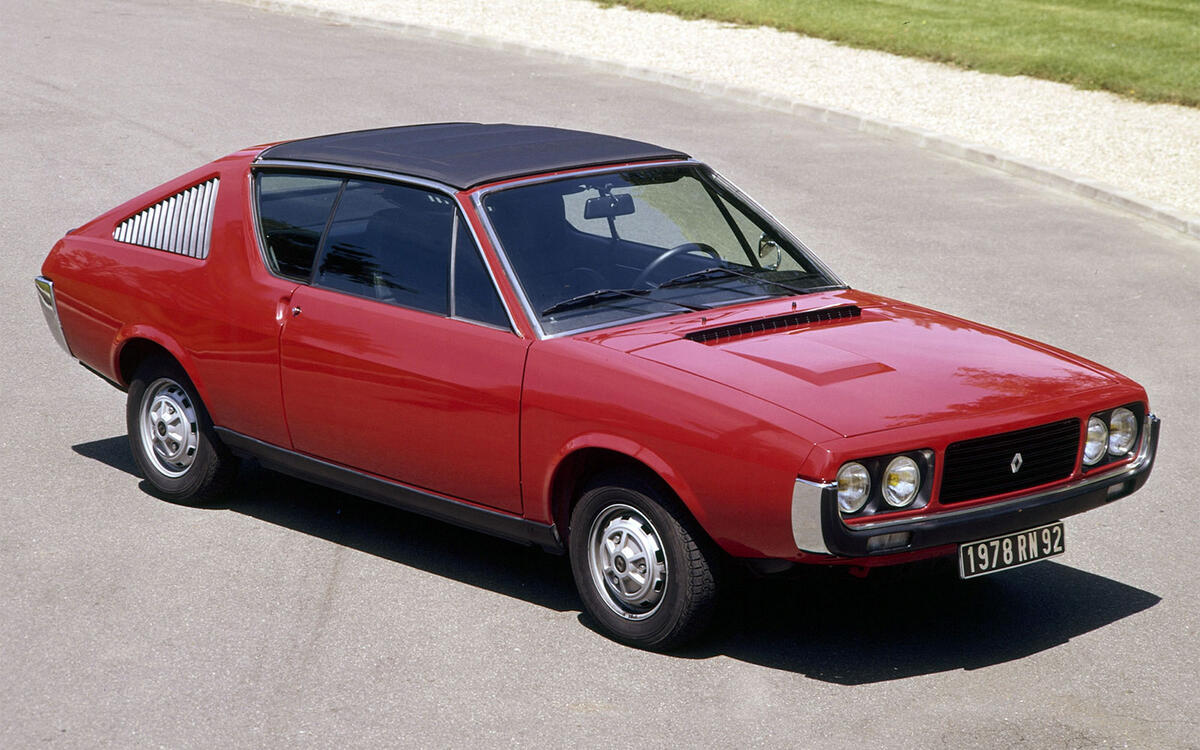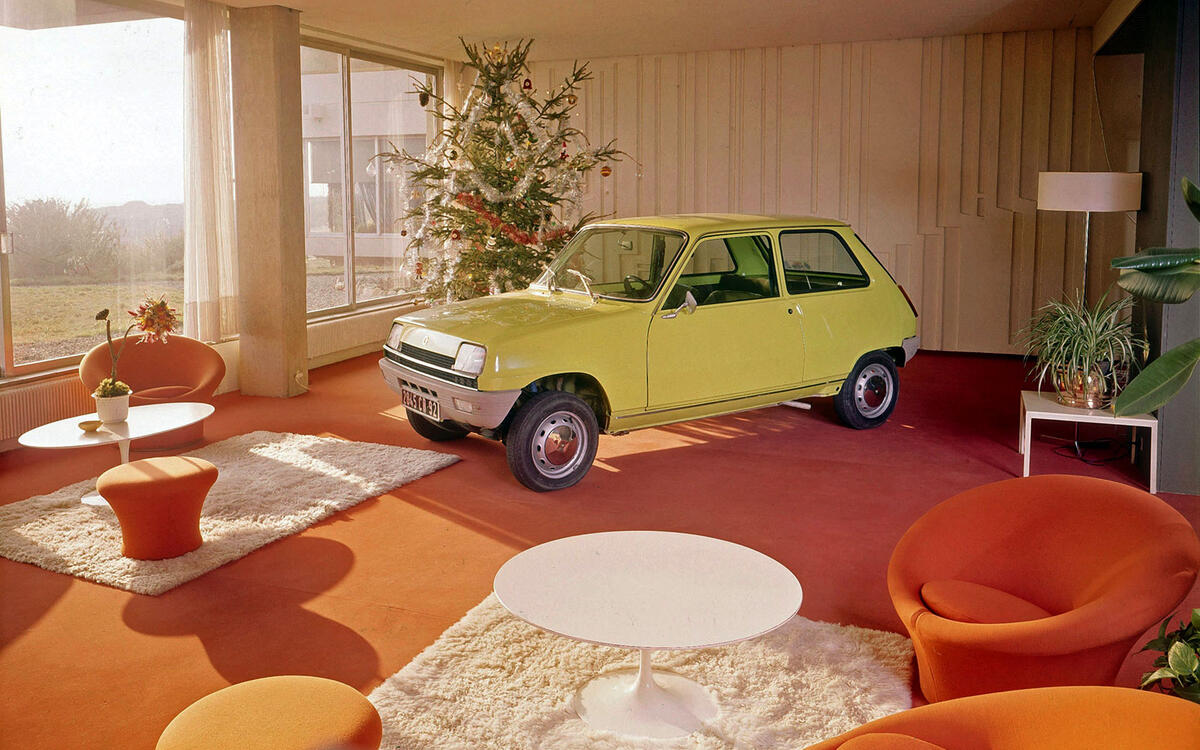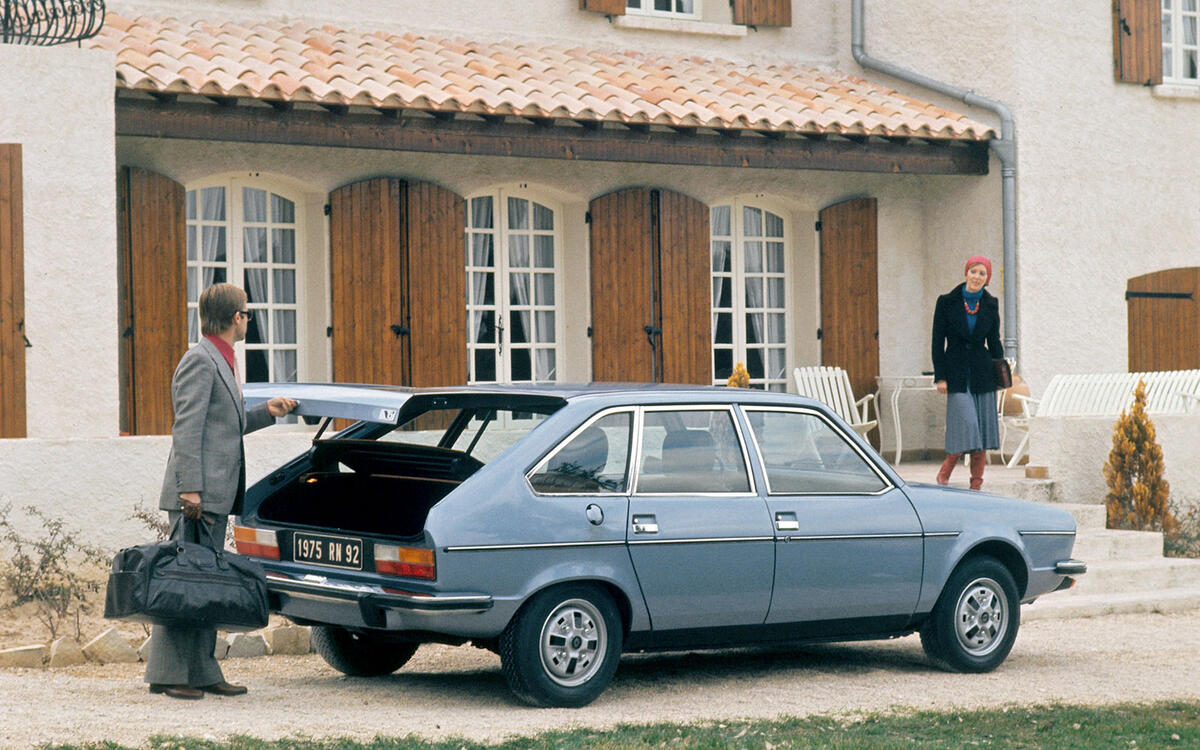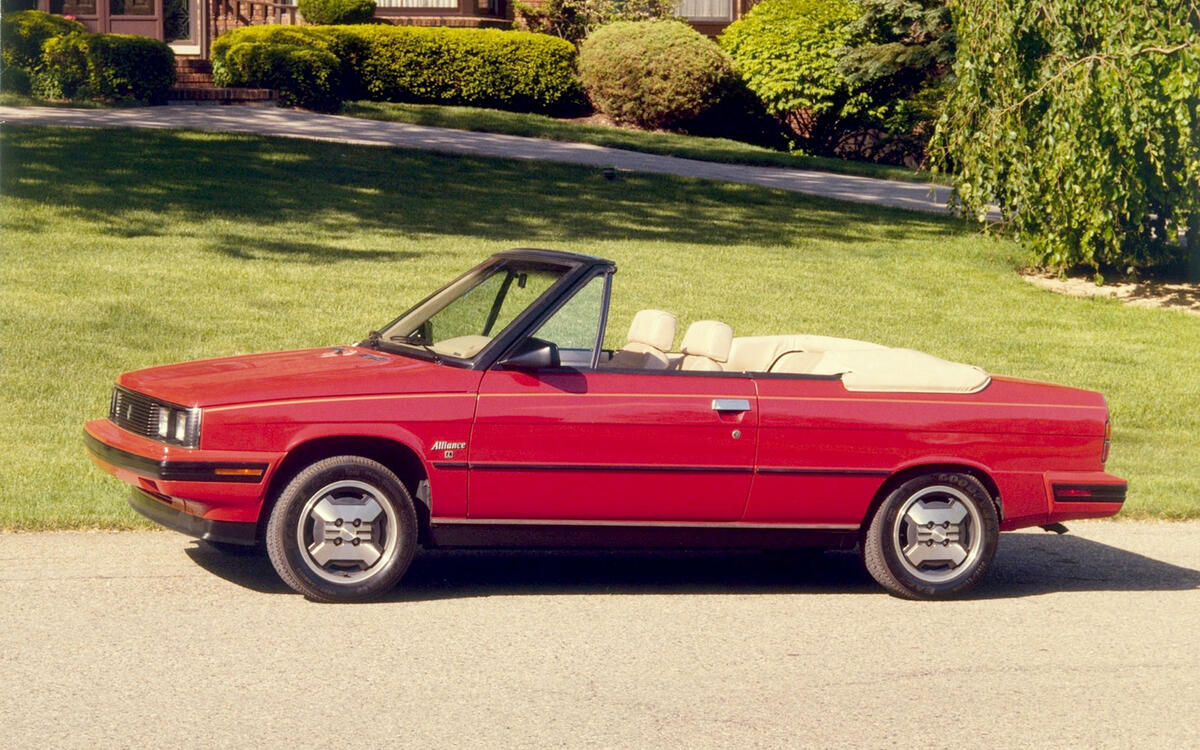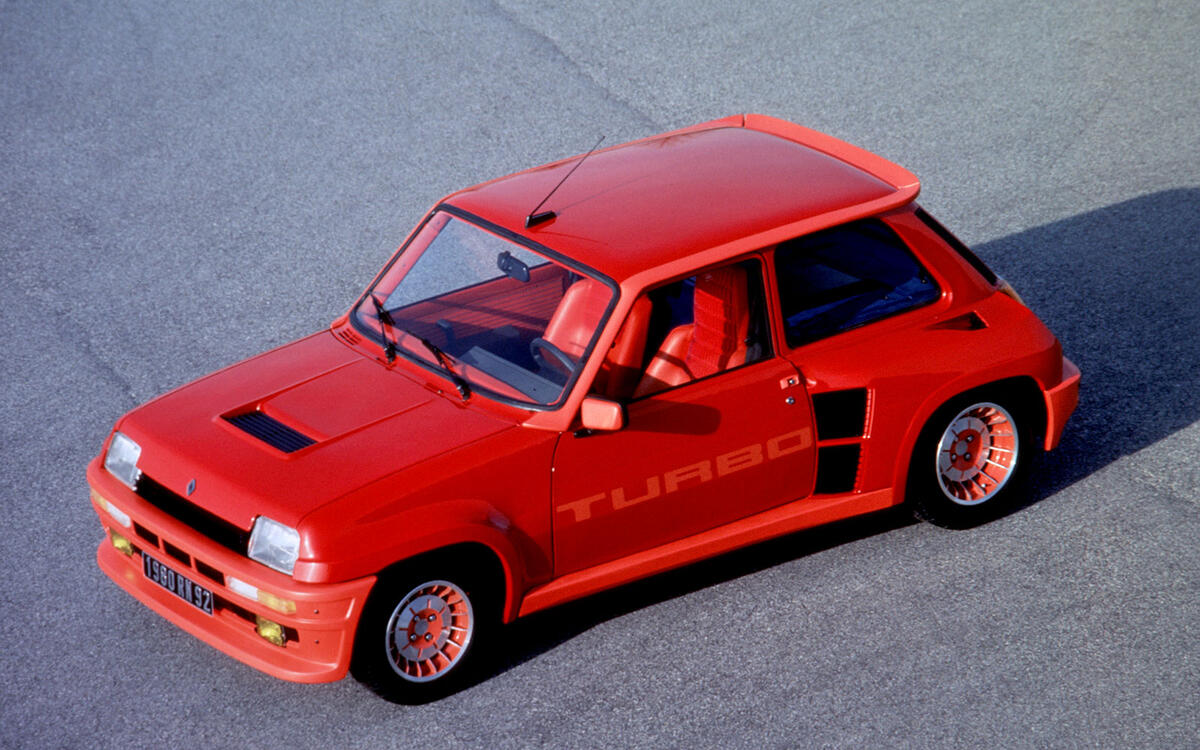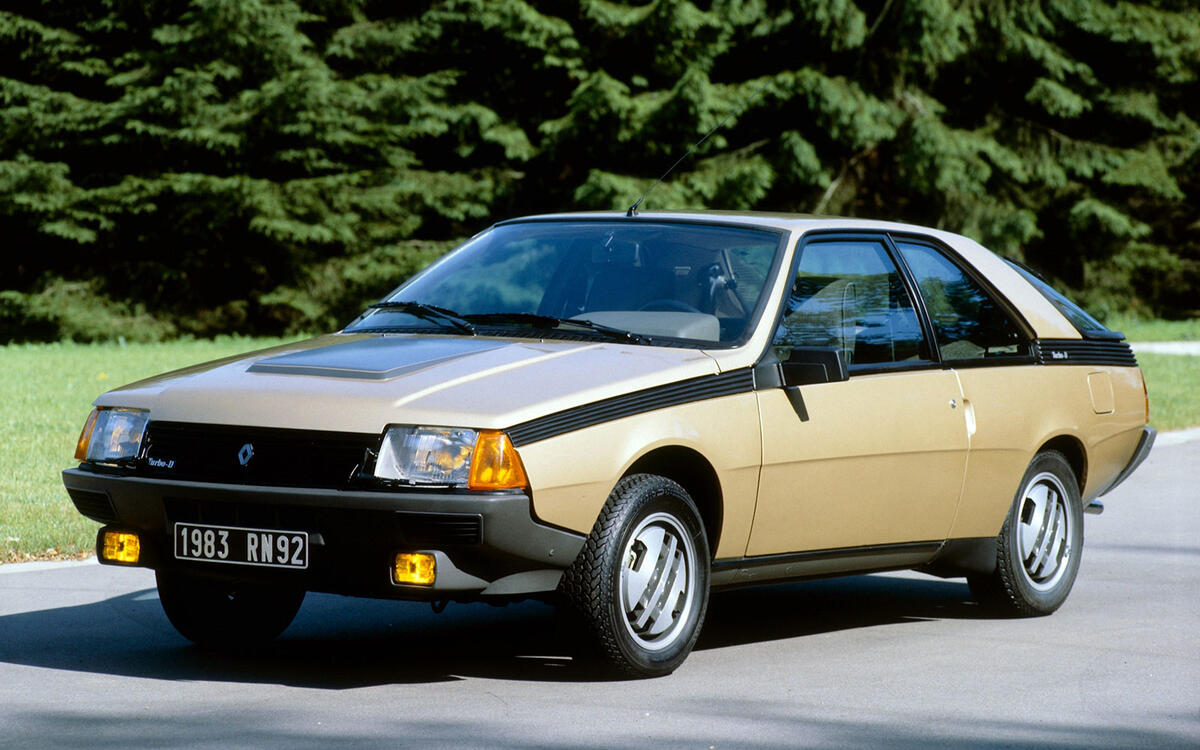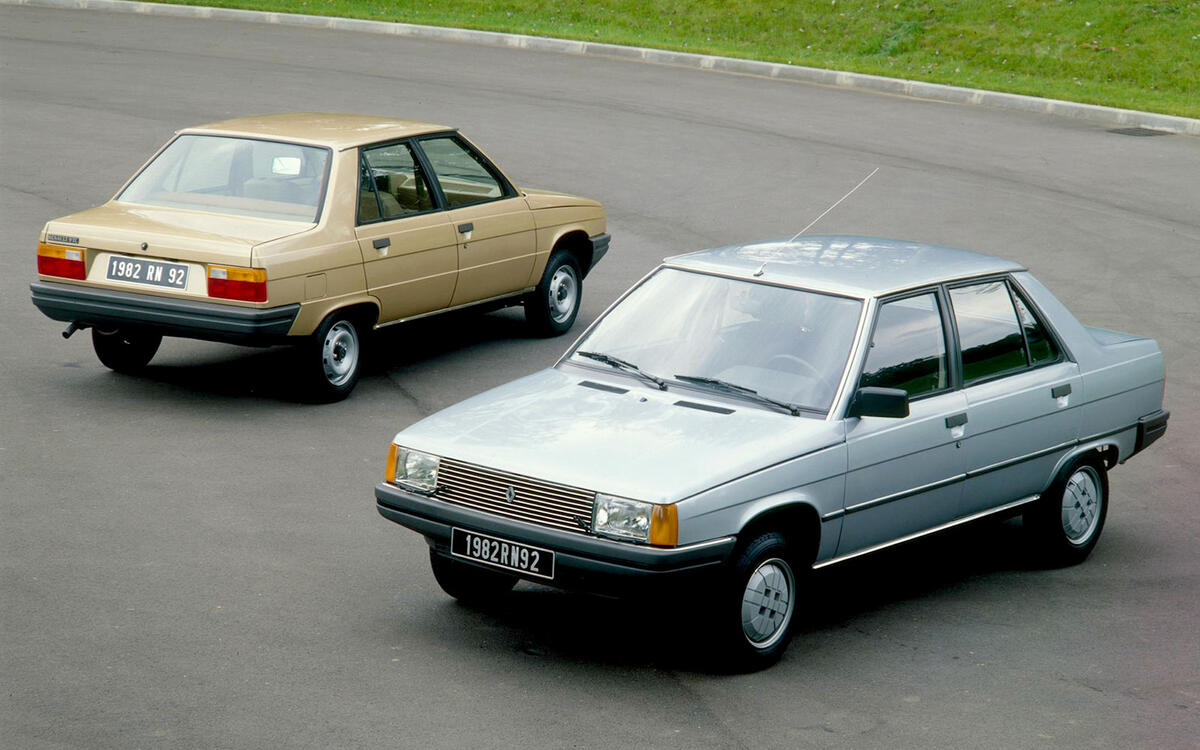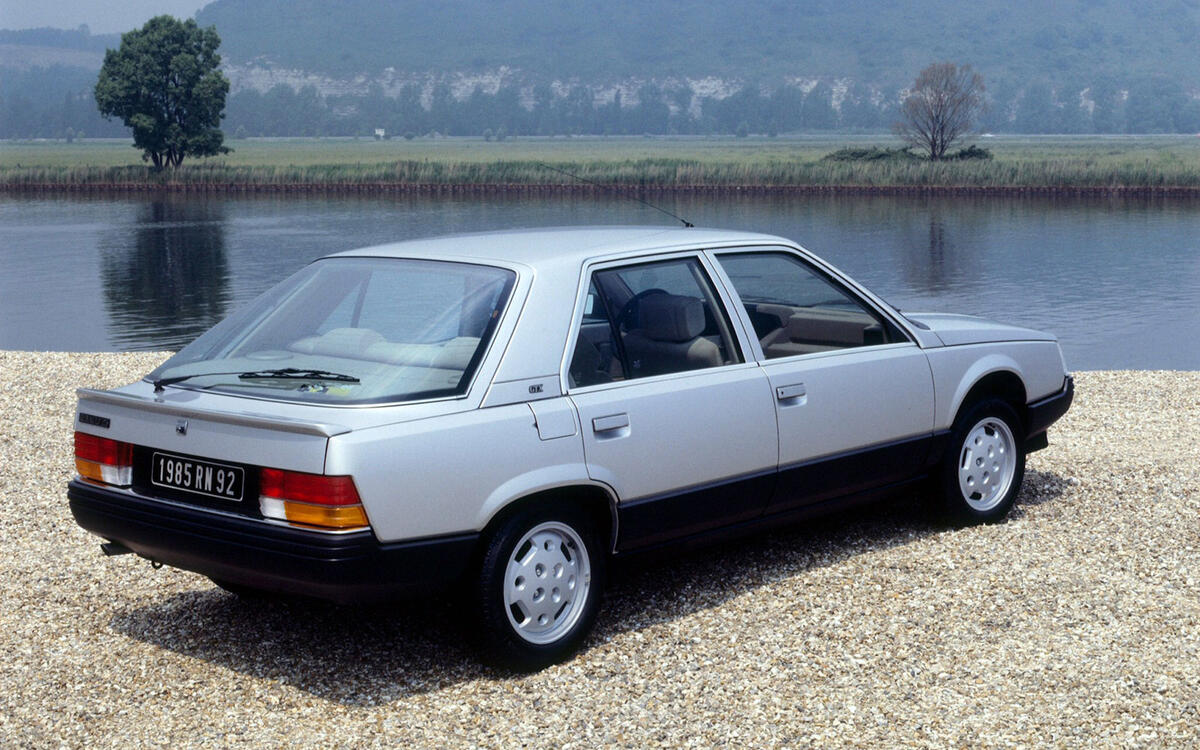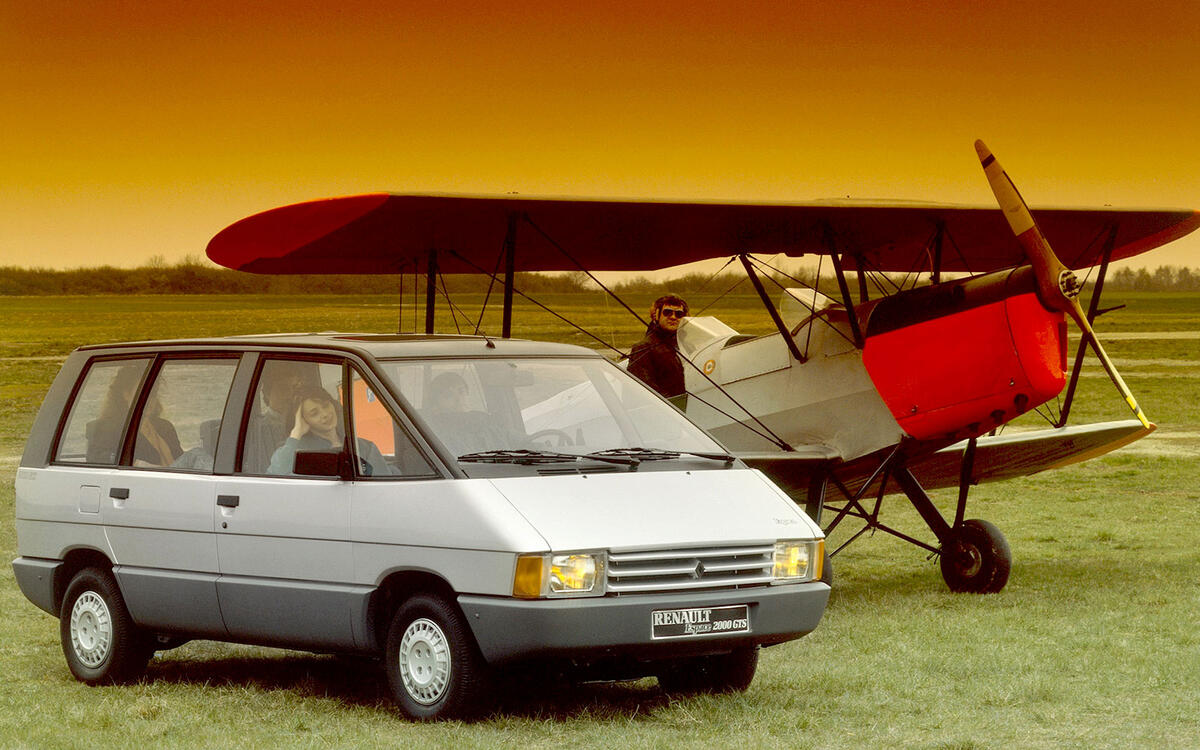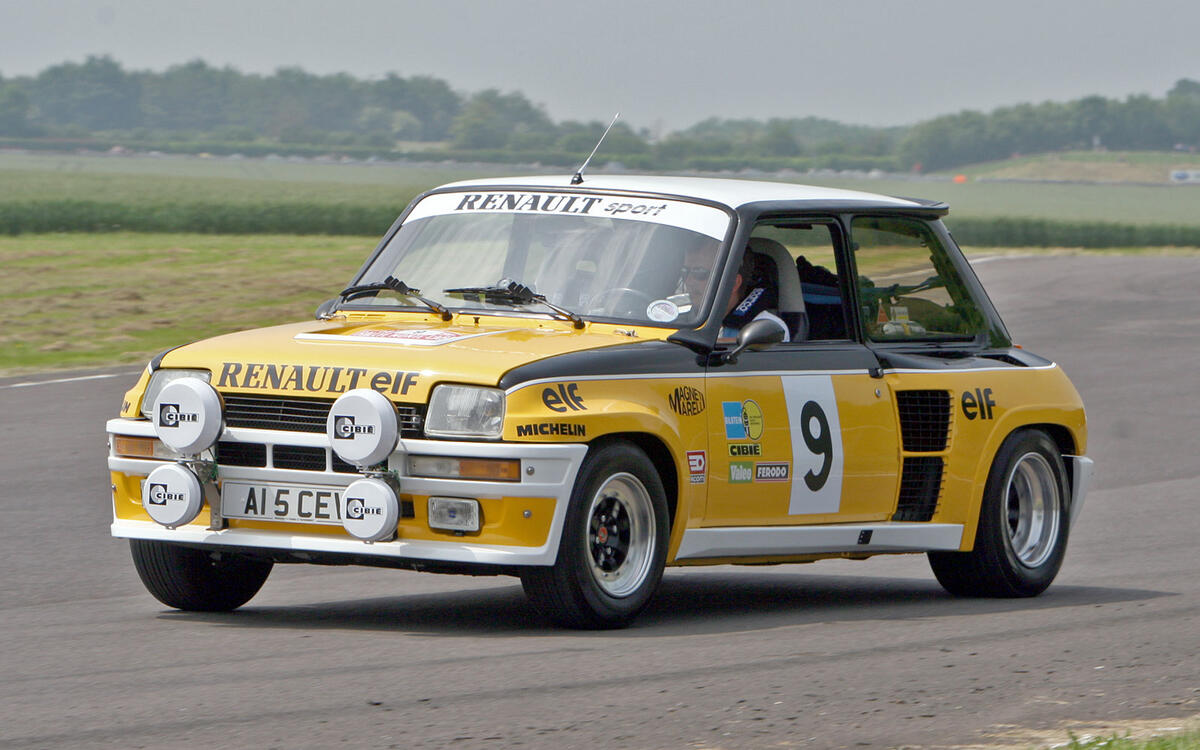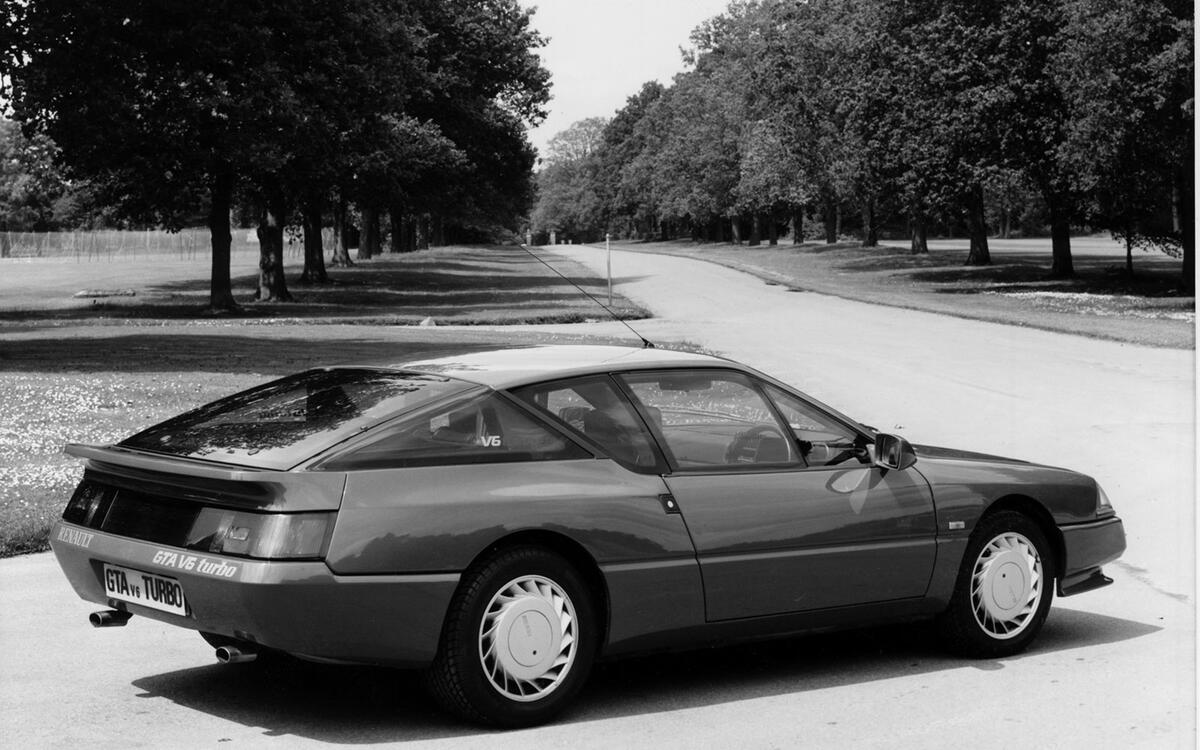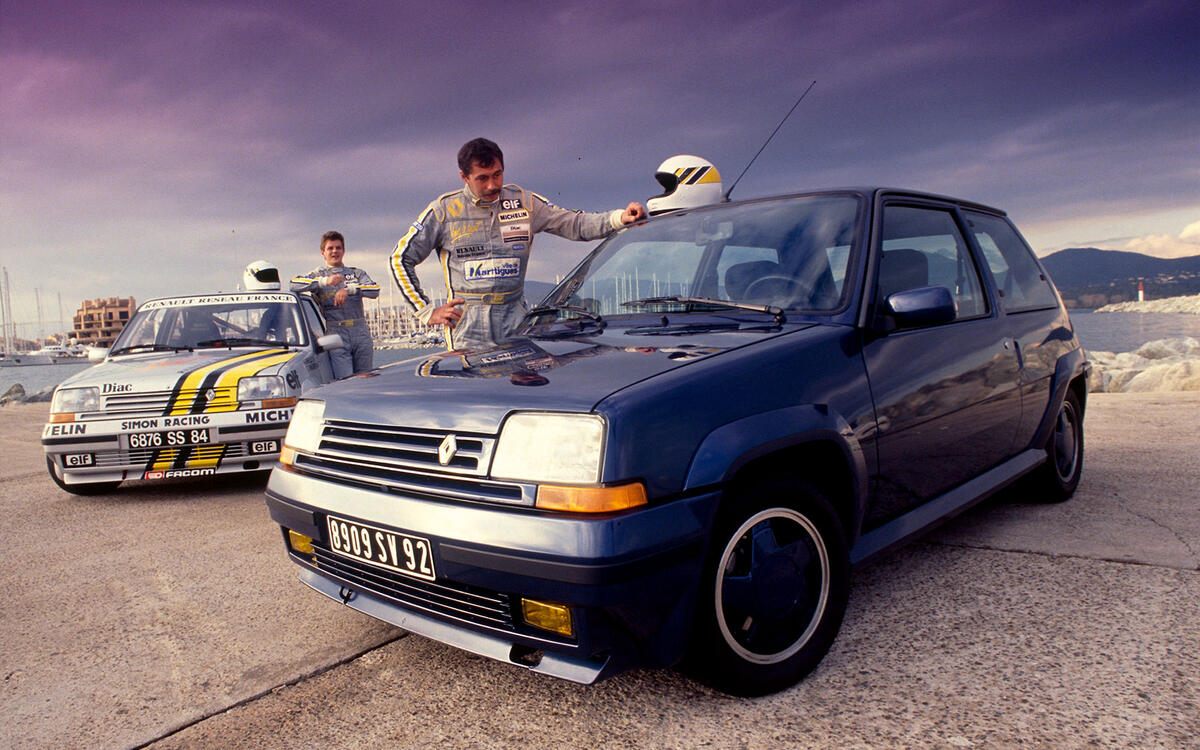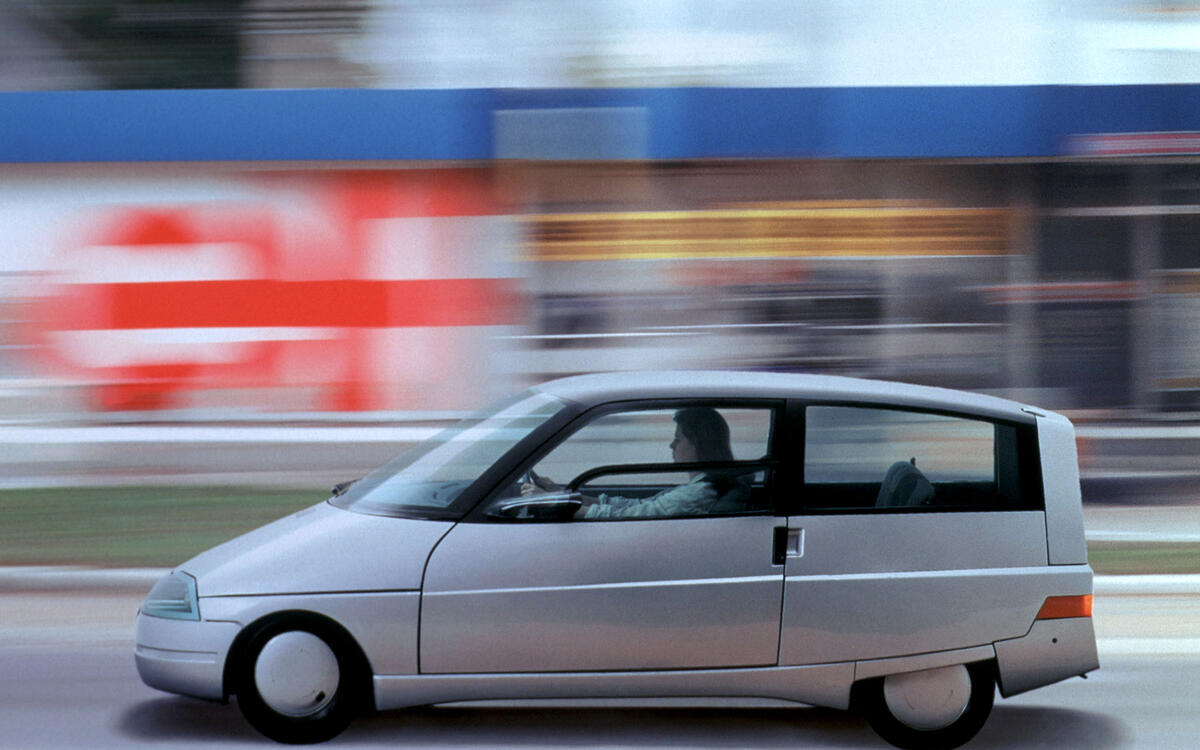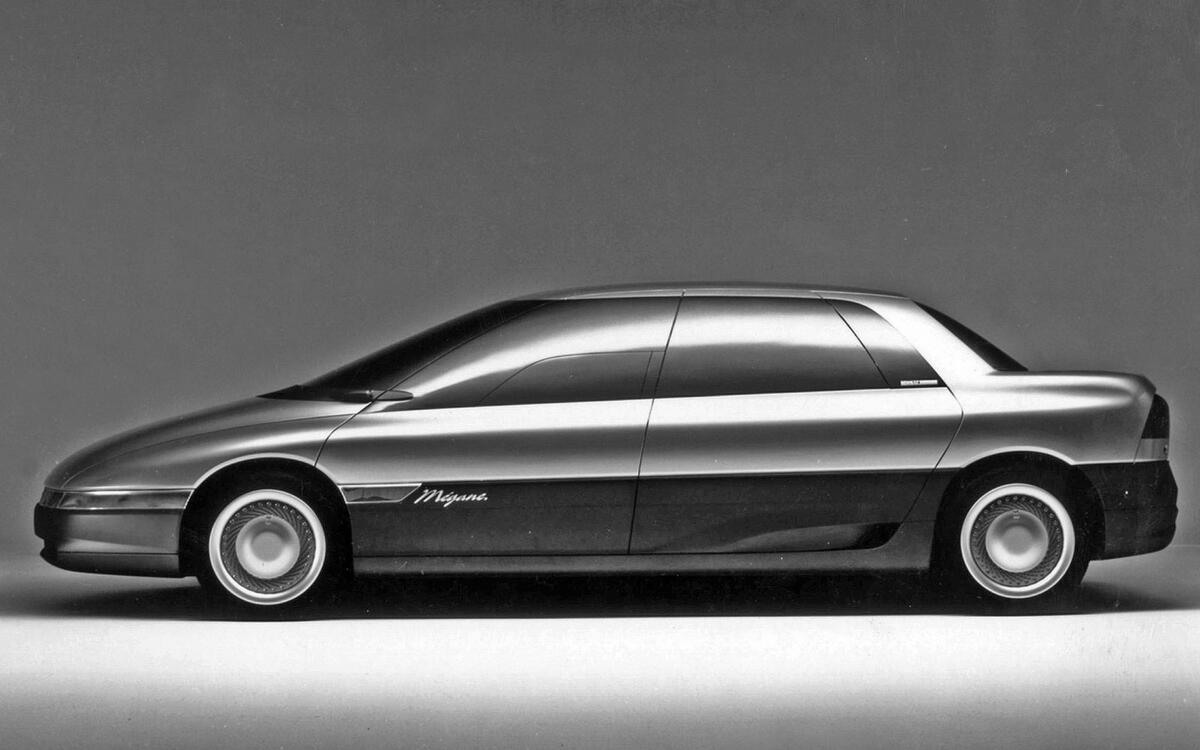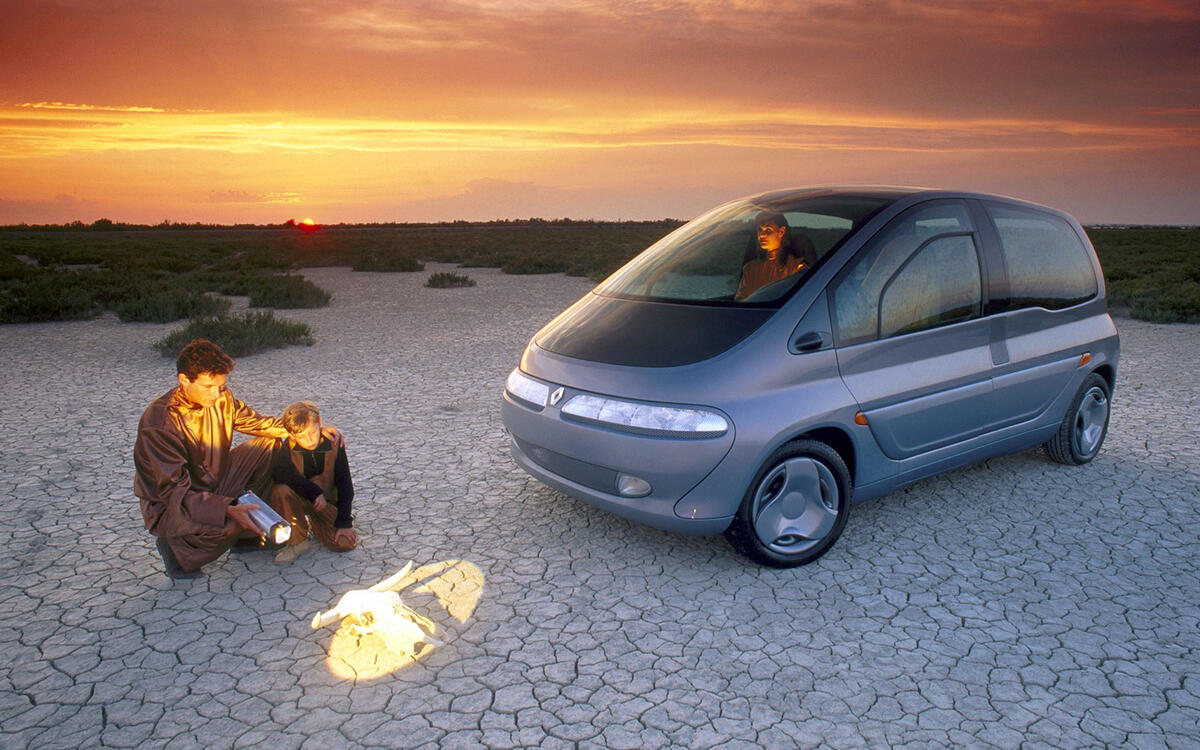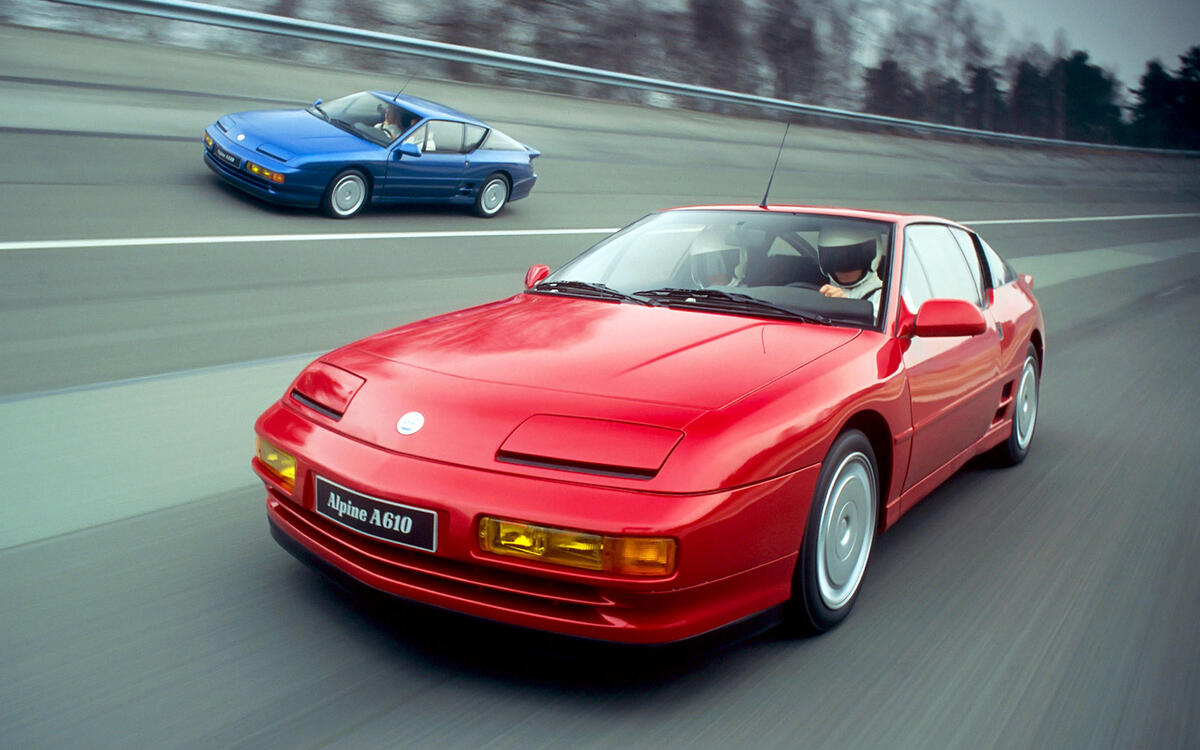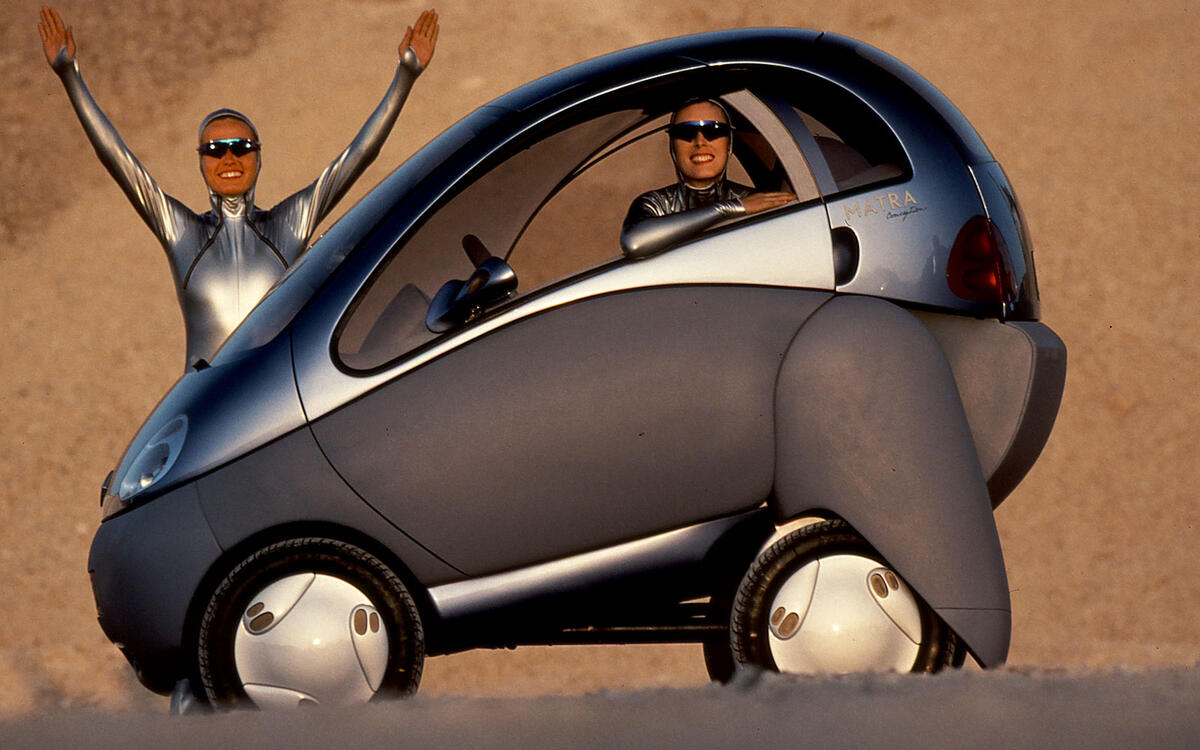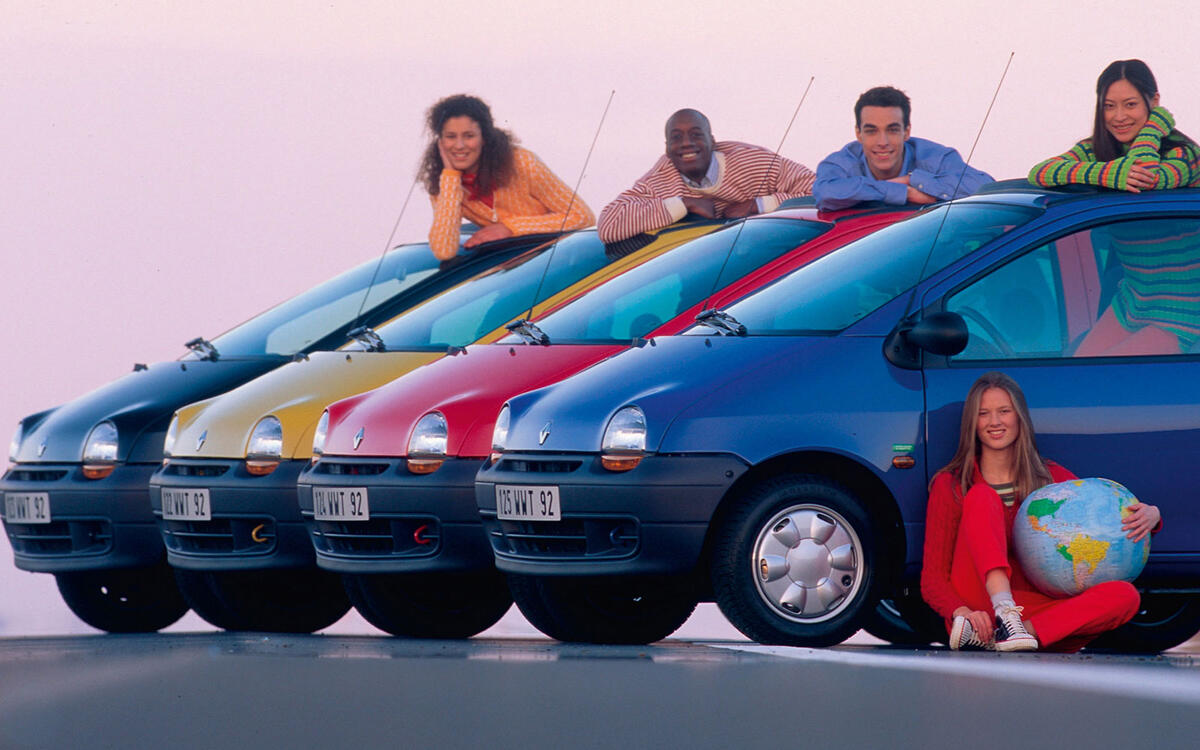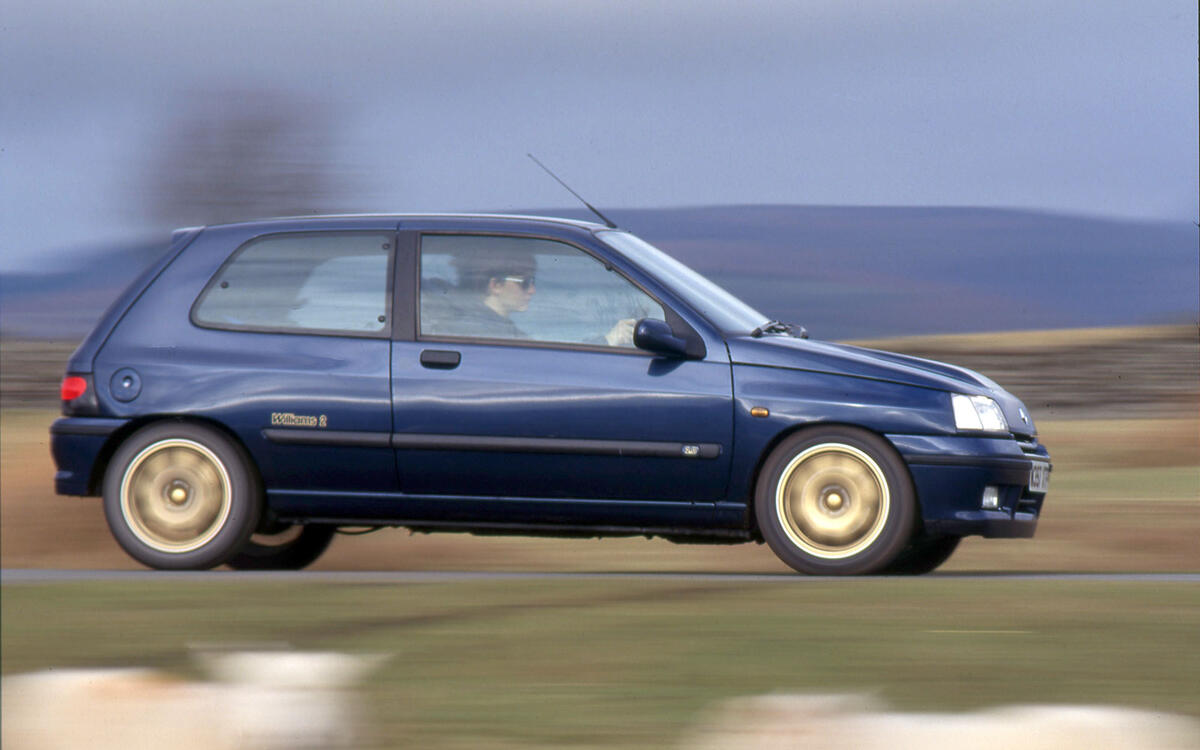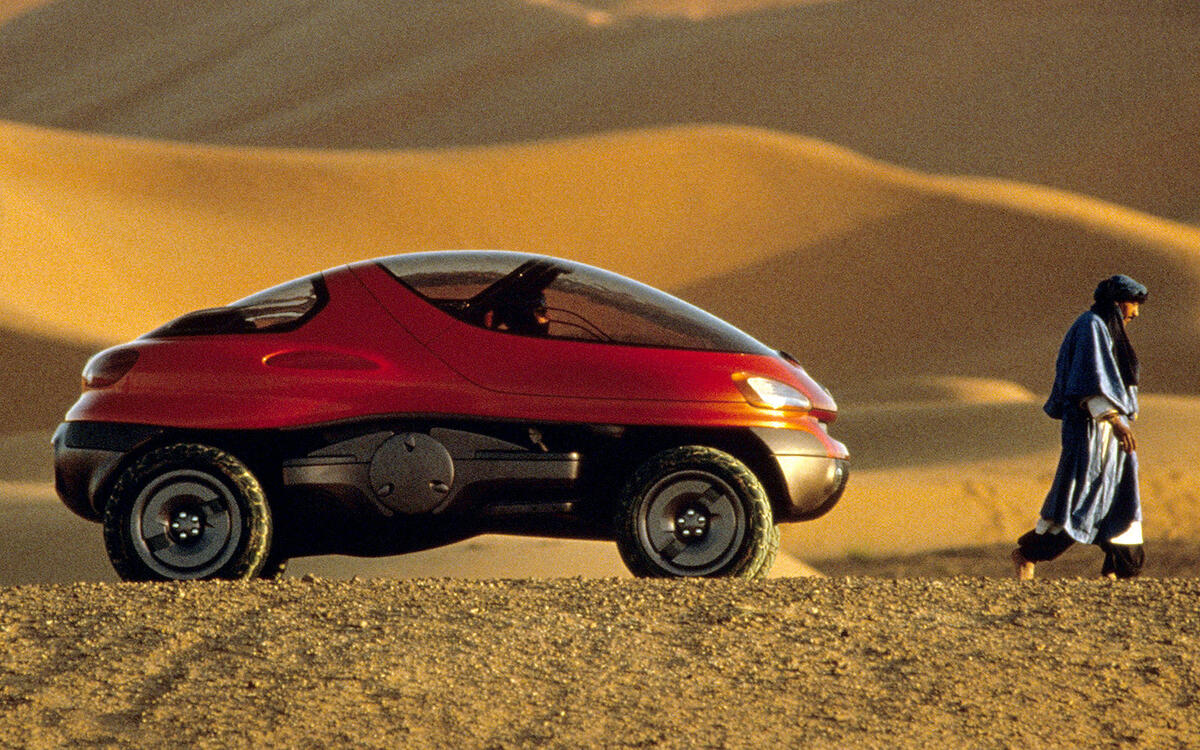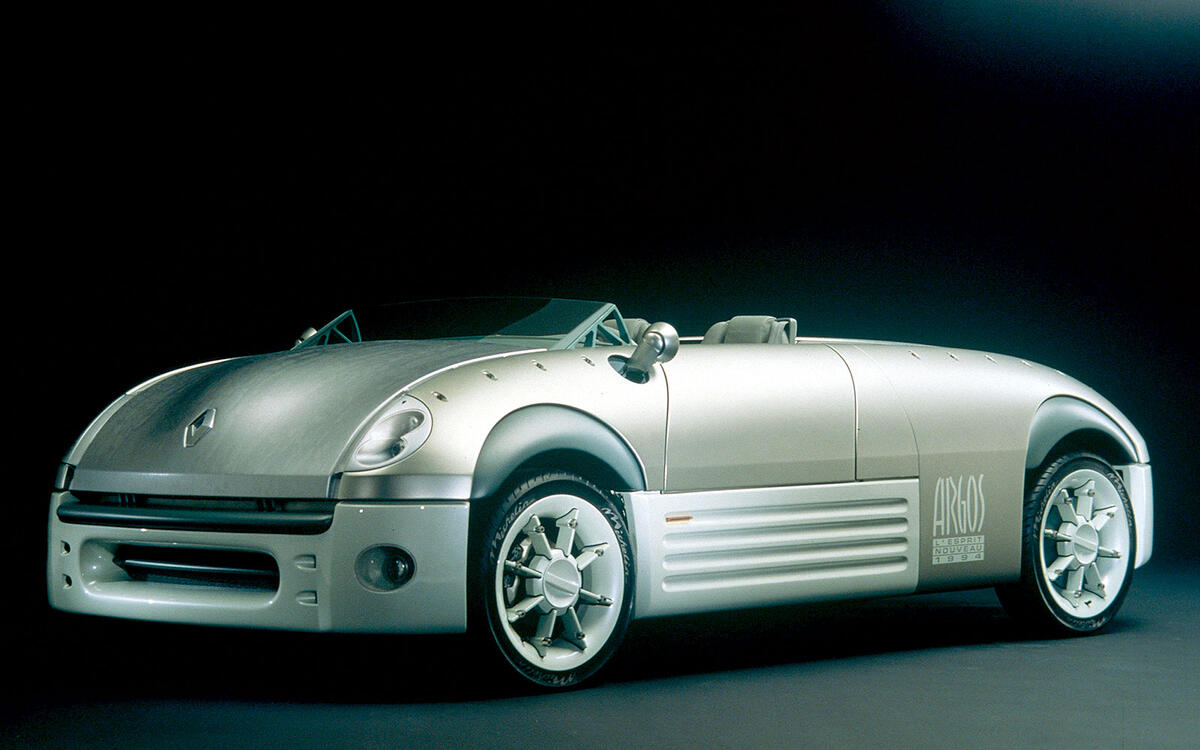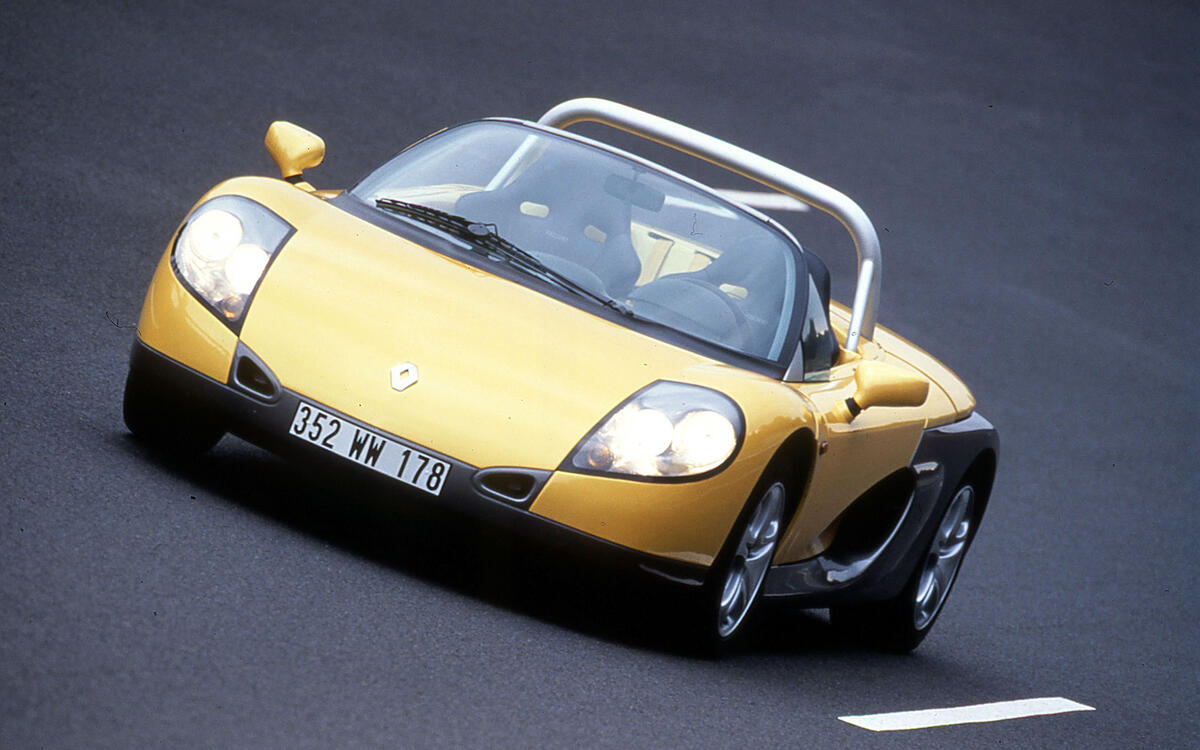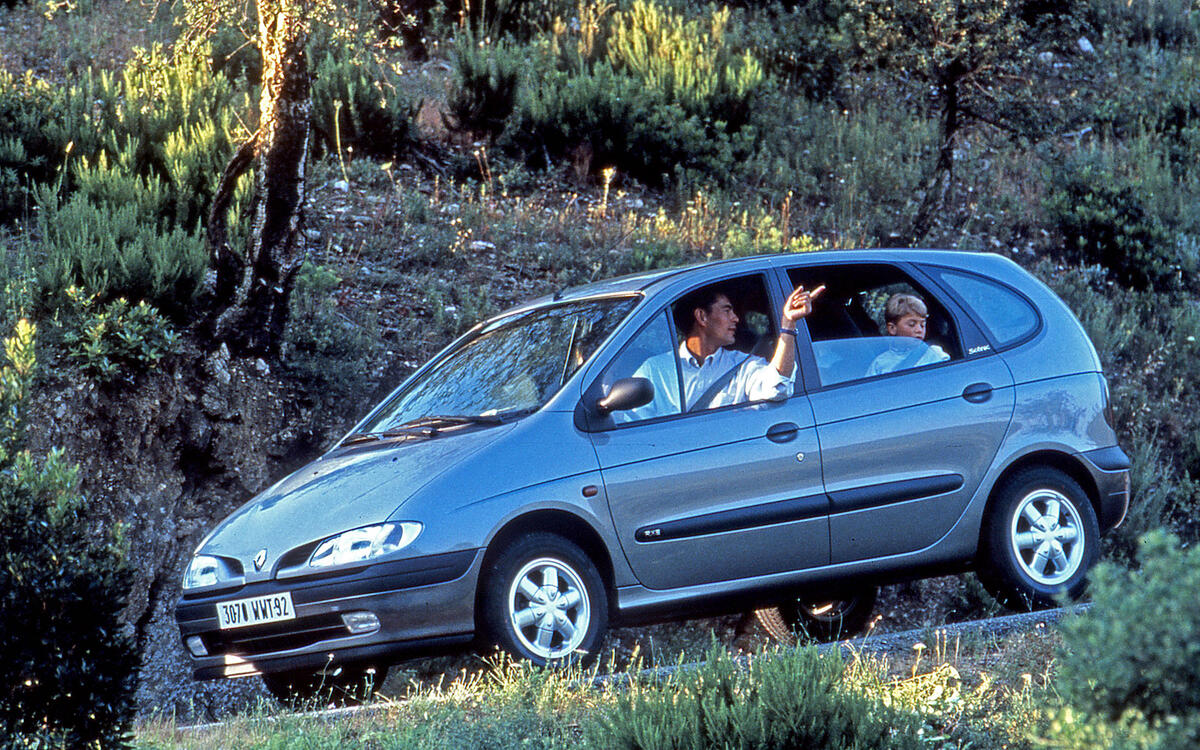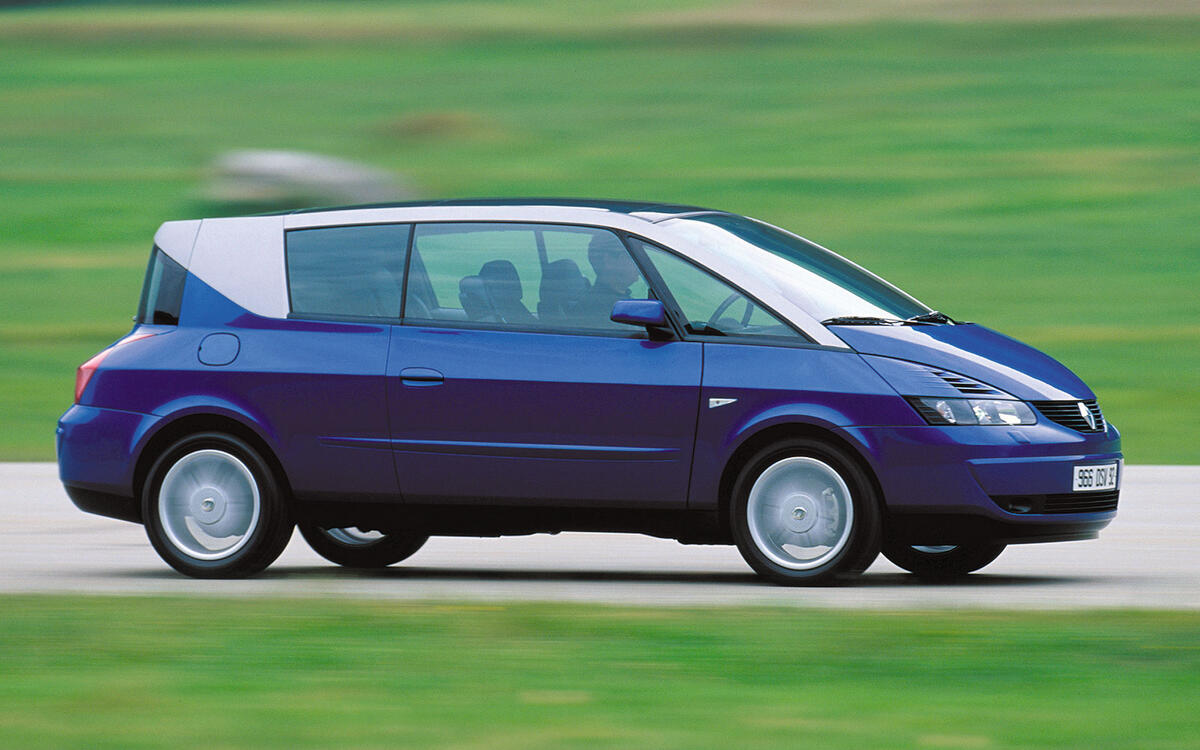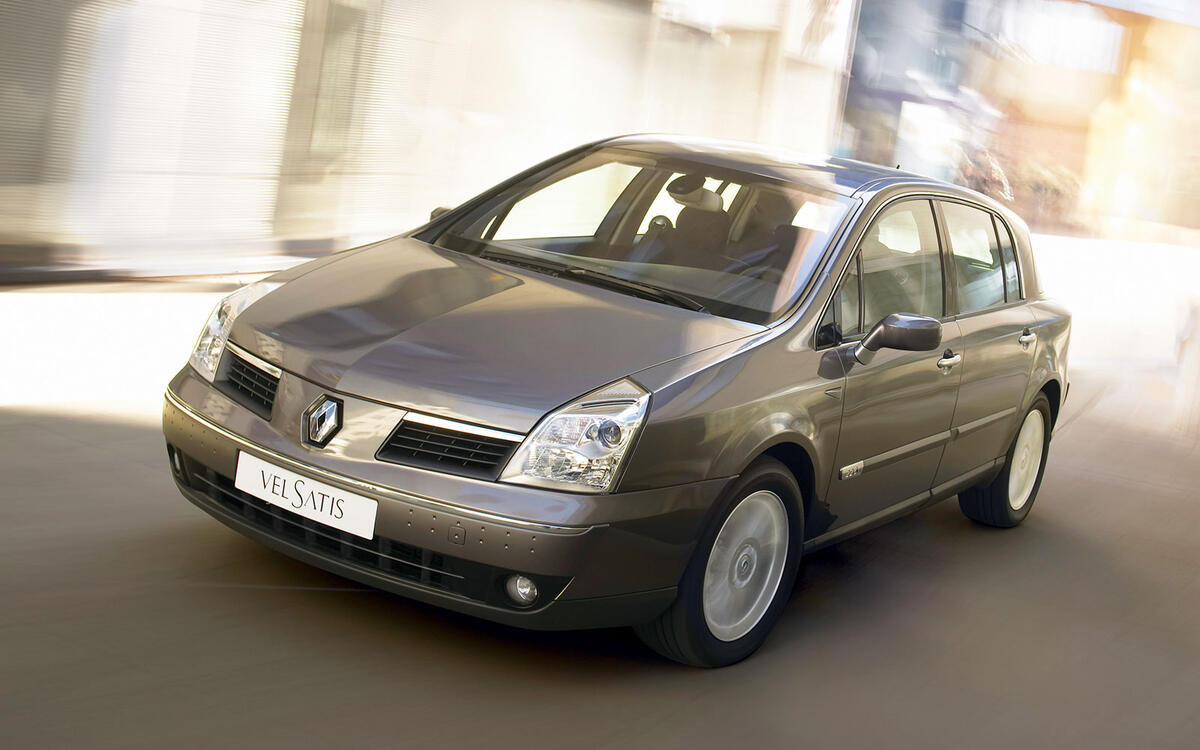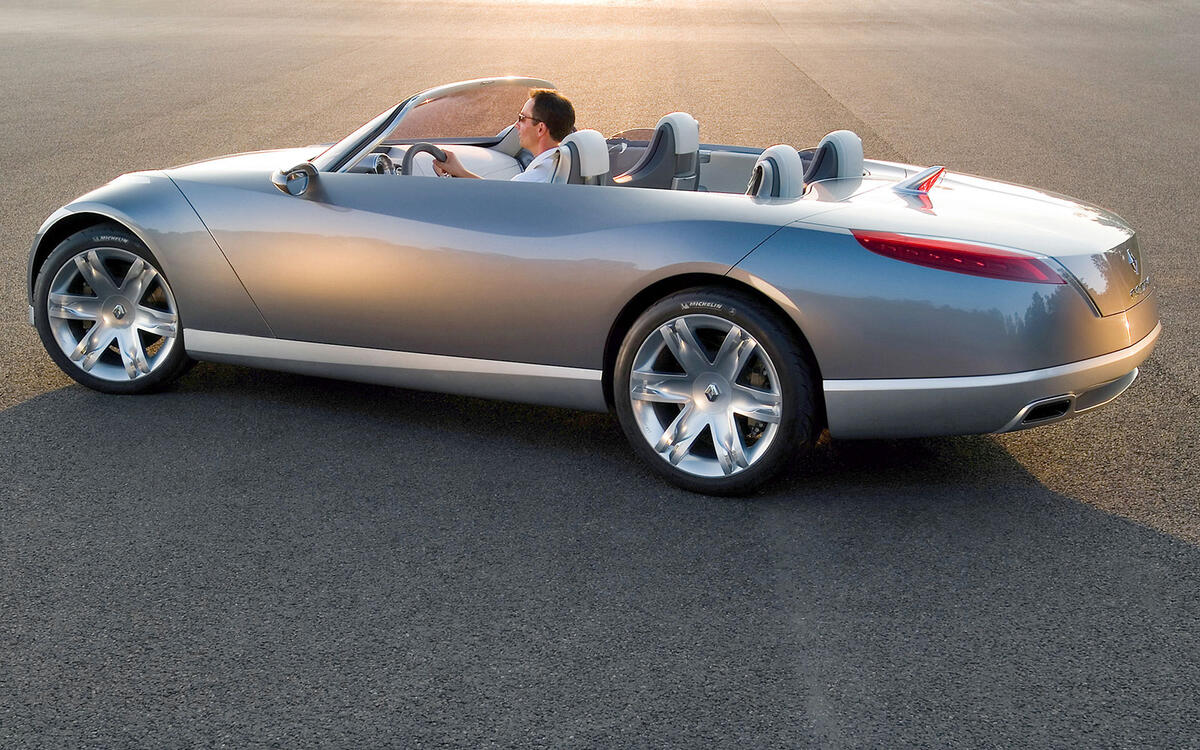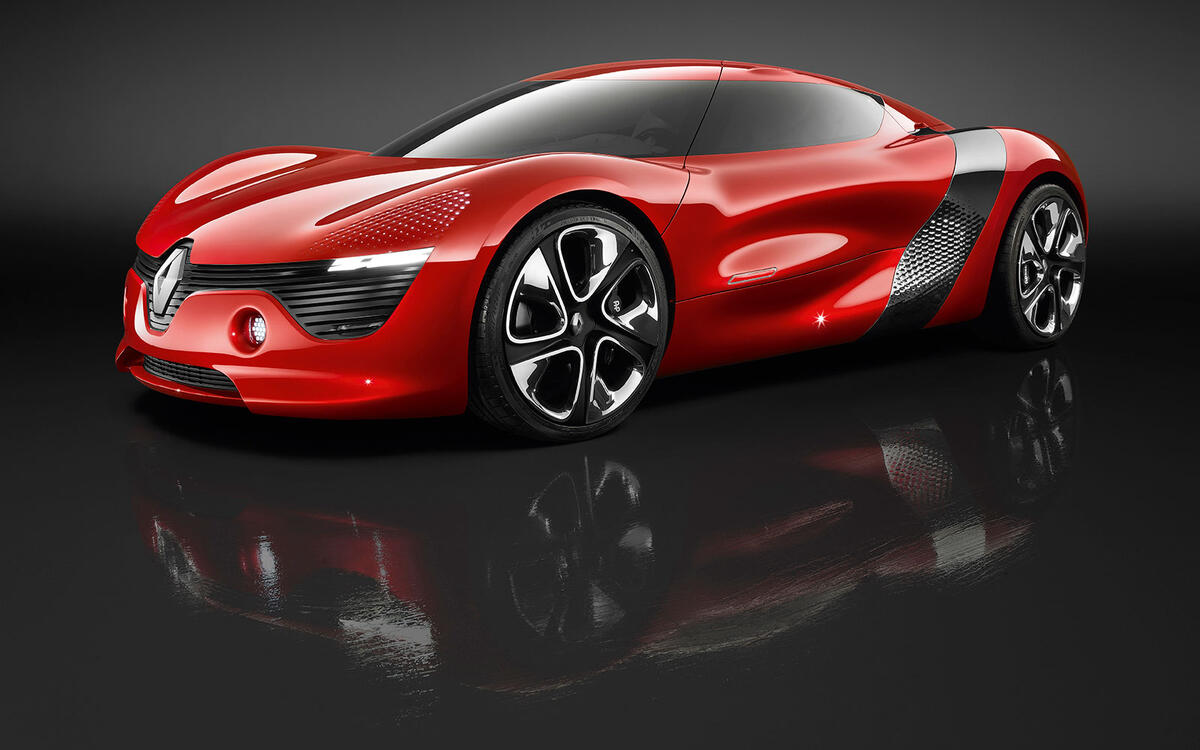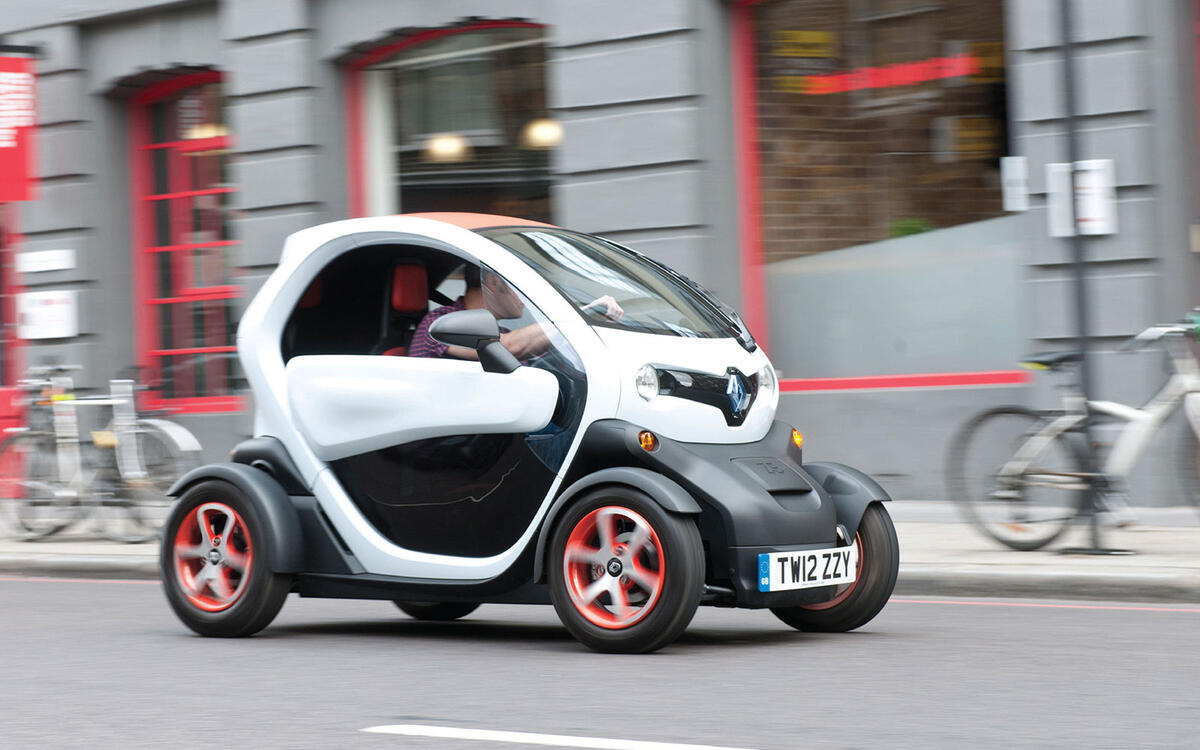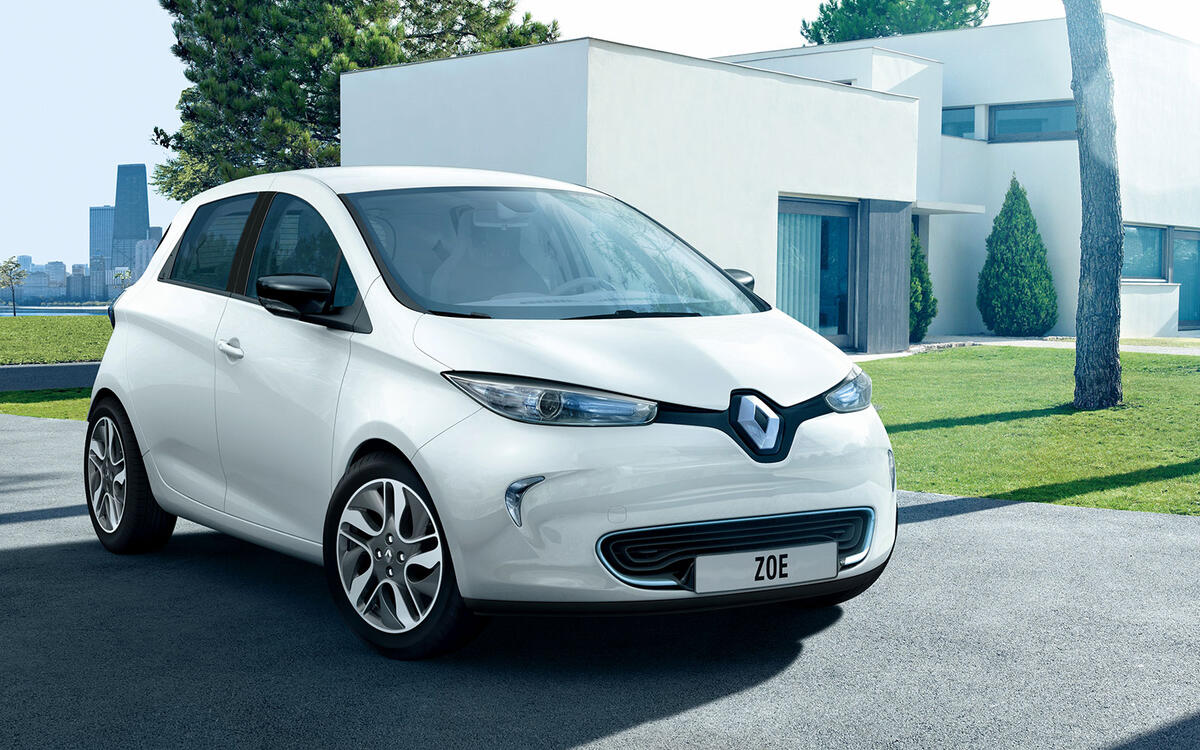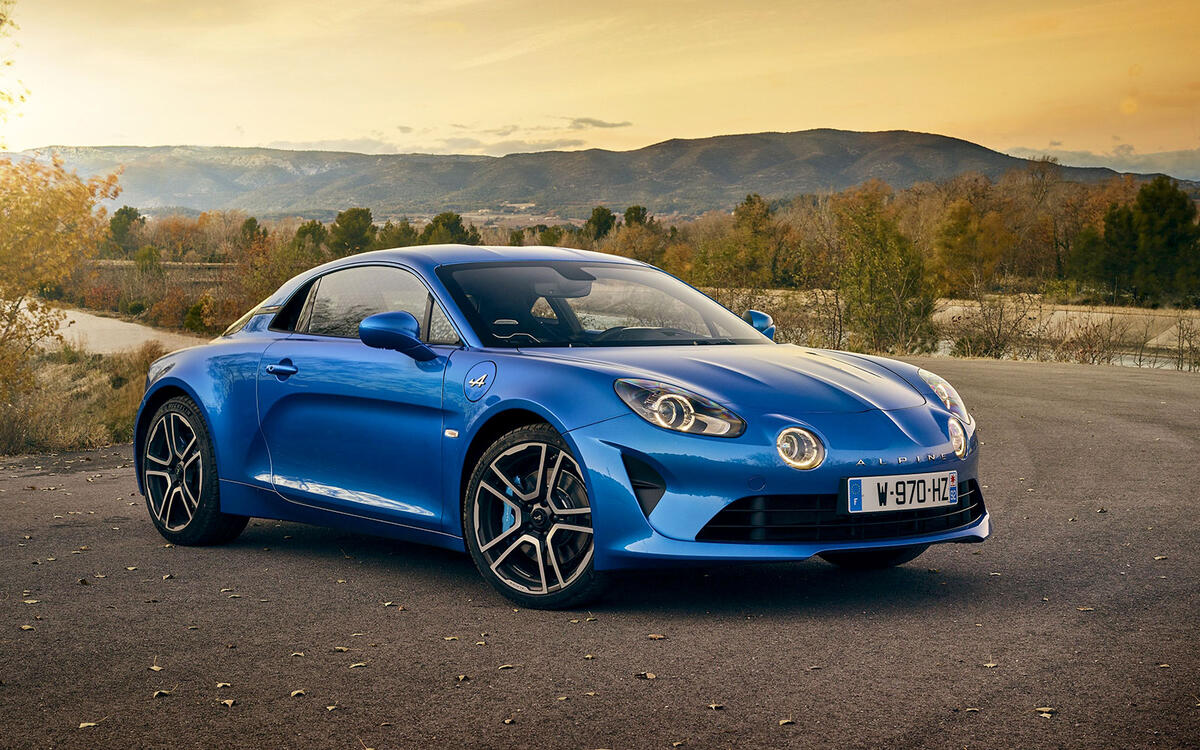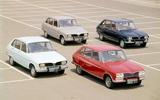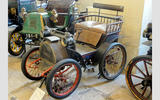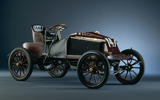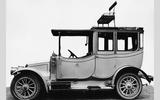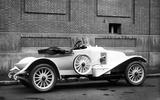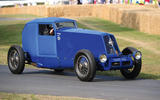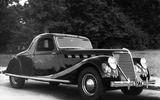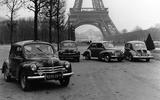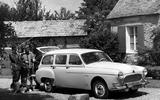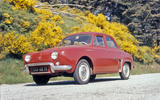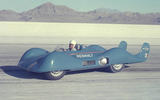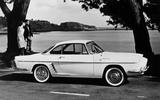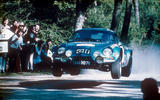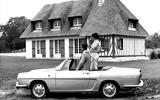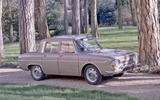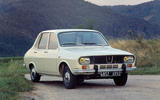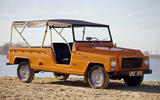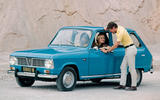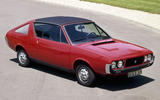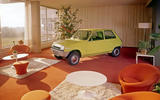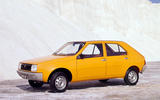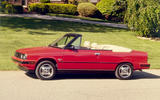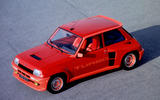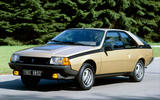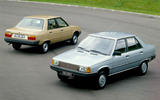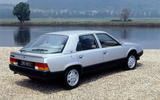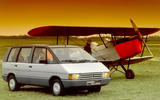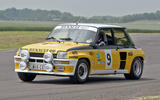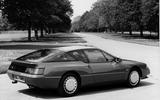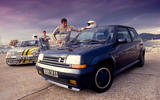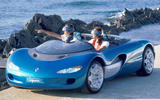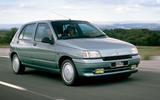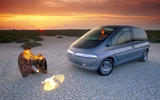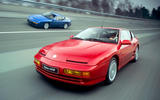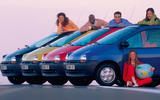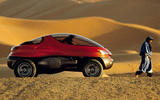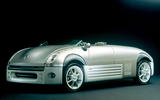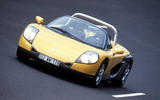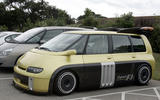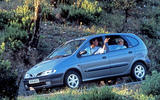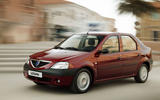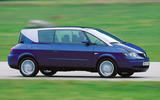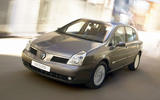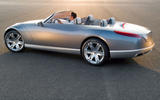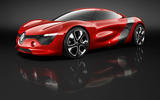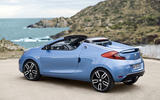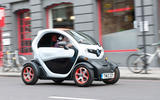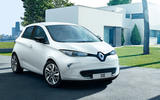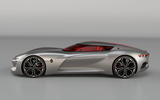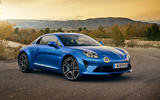 Slide of
Slide of
As one of France's most innovative car makers, Renault has introduced a raft of radical concept and production cars over the years and it's also been heavily involved in motor sport.
With numerous collaborations under its belt, some more successful than others, Renault's history is rich and varied. We can hope to give only a flavour of it here, but read on and we reckon you'll rediscover all sorts of French fancies that you'd forgotten about:
 Slide of
Slide of
Renault Type A (1899)
Louis, Marcel and Fernand Renault set up Société Renault Freres in 1899, having already built a prototype 1CV voiturette the previous year. Capable of 20mph, the Type A got an annual facelift until it went out of production in 1903, by which point it was fitted with a 5hp engine in place of the original 1hp unit.
 Slide of
Slide of
Renault Type K (1902)
Until the arrival of the Type K in 1902, Renault had fitted engines with just one or two cylinders. But the Type K brought with it a new four-cylinder powerplant that displaced either 3.1 or 4.9 litres. Built only really for motor sport, large radiators were mounted on either side of the engine and there was minimal bodywork in a bid to keep weight down.
 Slide of
Slide of
Renault Type BF (1910)
Throughout the first decade of the 20th century, Renault developed its products at a frenzied pace. Every year the company introduced new models with either two, four or six cylinders, with this model typifying Renault's output. The BF featured a 4.4-litre four-cylinder engine rated at 20bhp to give a top speed of around 55mph.
 Slide of
Slide of
Renault Type JY 18CV (1922)
Until car production resumed after WW1, Renault used engines with pairs of cylinder blocks (two pairs of cylinders or two sets of three depending on the number of combustion chambers). In 1919 Renault switched to monobloc construction and then in 1922 came the next stage – a single-block six-cylinder powerplant in the Type JY.
Displacing 4.2 litres and rated at just 18bhp , the powerplant featured side valves so there was no removable cylinder head for maintenance. This was also the first Renault to feature four-wheel brakes – with a gearbox-driven servo no less.
 Slide of
Slide of
Renault 40CV Type NM (1926)
The 40CV sat at the top of the Renault range in the 1920s, and took part in many of the speed trials popular at the time. In 1926 the ultimate version of this 9.0-litre car was developed, complete with single-seat, streamlined coupé bodywork, exposed wheels and a 14-strong crew trained in the art of refuelling it.
It covered 50 miles at 118.1mph, and went on to achieve a 24-hour average of 107.9mph – big speeds for a production-based car of the day.
 Slide of
Slide of
Renault Juvaquatre (1938)
The Juvaquatre marked a turning point for Renault with its monocoque construction, front-hinged doors and independent front suspension. Power (such as it was) came from a side-valve 1003cc four-cylinder engine rated at 23bhp. Initially this economy car was offered only as a saloon, but later came an estate and van. In the post-war years the Juvaquatre would go back into production, while Renault prepared its new models.
 Slide of
Slide of
Renault Suprastella (1939)
Remove the Renault badges and you'd be hard-placed to work out who made the Suprastella. Powered by a 5448cc eight-cylinder engine and very generously proportioned, it looked more like something built in America.
Buyers could choose from a four-door saloon, a two-door coupé or a two-door cabriolet.
 Slide of
Slide of
Renault 4CV (1947)
France’s answer to the Volkswagen Beetle, the 4CV featured a rear-mounted engine that drove the rear wheels, wrapped in a curvy bodyshell that was completely up to the minute. However, while the VW offered just two doors, the Renault had four, along with all-independent suspension plus rack-and-pinion steering – but it was constantly outsold by Citroën’s 2CV and the Beetle.
 Slide of
Slide of
Renault Colorale (1950)
Renault couldn't survive with only the 4CV, but it didn't have the cash to develop another car. The answer was to dust down the Primaquatre from 1935 and freshen it up a bit. That car's 2.4-litre four-cylinder side-valve engine was carried over, but by 1953 a 2.0-litre overhead-valve engine was installed, borrowed from the Renault Frégate.
 Slide of
Slide of
Renault Frégate (1952)
With a front-mounted engine and rear-wheel drive, the Renault Frégate was very conventional, but it was also modern, looked great and allowed Renault to move upmarket from the 4CV. The engine was a 2.0-litre unit that gave the Frégate a respectable top speed of 81mph. Saloon, estate and convertible editions were offered.
 Slide of
Slide of
Renault Dauphine (1956)
The first car to sell two million in France, the rear-engined Dauphine was also built in the UK. Over 100,000 were sold there, but few survive because of horrific corrosion. The Renault Dauphine was a fabulous car for several reasons.
Eminently practical and affordable, it was a hoot to drive thanks to independent suspension at the front and an optional hydro-pneumatic set-up at the rear. Gordini versions could even top 100mph.
 Slide of
Slide of
Renault Etoile Filante (1956)
Six years after Rover unveiled JET1, the world's first gas turbine-powered car, Renault showed its Etoile Filante. Built purely to break speed records, Etoile Filante went to Utah and with its 270bhp Turbomeca engine it clocked a 192.5mph top speed – a record which still stands.
 Slide of
Slide of
Renault Floride (1959)
Offered in coupé and cabriolet forms, the rear-engined Floride went on sale in 1959, promoted by Brigitte Bardot. With a 36bhp 845cc four-cylinder engine the Floride wasn't quick (it topped out at 73mph), but more of a problem was its handling. A short wheelbase, long overhangs, primitive rear suspension and that engine hanging out the back meant the Floride was a handful in bends; no wonder few are left.
 Slide of
Slide of
Renault R4 (1961)
When the R4 made its debut in 1961, Renault needed to replace its best-selling 4CV. That was quite a tall order, but Renault sold more R4s in the first four years of production than it did 4CVs in a 15-year run, so the company clearly got it right. Development over the years appeared to be virtually nil, but there were quite a few changes along the way.
Early cars featured a 747cc engine, evolving through an 845cc unit before emerging as the 1108cc GTL in 1978 – although at the outset there was a 603cc version offered in France, called the R3.
 Slide of
Slide of
Alpine A110 (1961)
By combining small, light cars with powerful engines and Renault components, Alpine became a major force in world rallying during the late 1960s and early 1970s. Founded by Jean Redele in 1955, Alpine worked closely with Renault but the two companies were independent until Alpine was bought by Renault in 1973. It was mothballed in 1995 then revived with an all-new A110 in 2017.
 Slide of
Slide of
Renault R8 (1962)
The fourth and final rear-engined Renault before the company focused on front-engined models, the R8 initially sold alongside the Dauphine then replaced it. Roomier and faster with its 956cc engine, the car would become a giant killer in Gordini form, complete with 1108cc or 1255cc powerplants that provided a top speed of up to 106mph.
 Slide of
Slide of
Renault Caravelle (1962)
Taking over where the Floride left off, the Caravelle was essentially the same car but initially with the R8's 956cc engine which later gave way to the 1108cc unit as fitted in the R8 Gordini. In this form there was up to 89mph available – although you still had to be very careful in corners…
 Slide of
Slide of
Renault R16 (1965)
We all take space-efficient front-wheel drive hatchbacks for granted these days, but in the mid-1960s there was no such thing – until the ground-breaking Renault 16 arrived. It stayed in production for 15 years and proved massively popular thanks to its comfort and practicality.
Largely forgotten nowadays, the R16 was incredibly significant because of its hatchback design, complete with fold-flat seats. There was also independent suspension all round and disc brakes up front. It created a template that would be copied worldwide by virtually every major car maker.
 Slide of
Slide of
Renault R10 (1967)
While everybody remembers the R8, few can recall the R10 that was closely related. Indeed, the R10 was effectively just an R8 with a longer nose and tail, so it had more carrying capacity. However, whereas the R8 came with a 956cc engine the R10 got an 1108cc unit as standard.
 Slide of
Slide of
Renault R12 (1970)
The R12 was an important model for Renault, partly because it was a decent contender in the middle mass-market; buyers could choose between saloons and estates. This is also the car that would put Dacia on the map; this Romanian confection was even sold in the UK for a while, as the Dacia Denem. R12 buyers got a 1289cc engine and there was even a Gordini edition.
 Slide of
Slide of
Renault Rodeo (1970)
In the 1960s BMW introduced the Mini Moke, Citroen had the Mehari and there was a huge array of VW Beetle-based beach buggies. So Renault got in on the action with its own fun car – the Rodéo, which was never sold in the UK. Preceded by the Plein Air which was effectively an R4 with the roof lopped off, the Rodéo was still R4-based but featured plastic bodywork to reduce weight. Later would come an R6-based Rodéo, another based on the R5 and a 4x4 version.
 Slide of
Slide of
Renault R6 (1971)
Another long-forgotten Renault, the R4-based R6 was basically a shrunken R16 in concept, with a smaller (845cc or 1108cc) engine. Like its bigger brother, the R6 was a front-wheel drive five-door hatchback and just like the R16, the R6 is now virtually extinct.
 Slide of
Slide of
Renault R15 and R17 (1972)
The forgotten Renaults are coming thick and fast now. The R15 and R17 were intended to inject some coupé glamour into Renault's range; they were up against the Ford Capri, Opel Manta and Vauxhall Firenza, among others. Based on the R12, the R15 got two rectangular headlights and louvred rear quarters while the R17 got a quartet of circular lenses and glazed C-pillars. Whereas the R15 came with 1289cc or 1565cc engines, the R17 got 1565cc, 1605cc or 1647cc units.
 Slide of
Slide of
Renault R5 (1972)
A whopping 5.5 million first-generation R5s were built before Renault released a successor which looked just the same. Offering brilliant space efficiency and practicality, the R5 looked fresh and offered excellent comfort levels, while performance was reasonably perky too; buyers could opt for 845cc or 956cc engines. Later would come an Alpine version with a 93bhp 1397cc engine, which is the most collectible edition now.
 Slide of
Slide of
Renault R30 (1975)
In 1975 Renault decided it was time to compete in the executive segment and the R30 was the result, with its 142bhp 2664cc V6 engine, developed in conjunction with Peugeot and Volvo. Spacious, comfy and capable of swallowing big distances with ease, a four-cylinder version was launched in 1976, called the R20.
This was more frugal and just as roomy, but it was specified to a lower standard (no power steering, drum rear brakes) and cheaper than its posher sibling, so it always took the lion's share of sales.
 Slide of
Slide of
Renault R14 (1977)
The R14 was a significant car for Renault because while the company was no stranger to front-engined, front-wheel drive cars, until the arrival of the R14 the powerplant was always positioned longitudinally. Now there was a transverse engine for better space efficiency; the all-alloy 1218cc 'four' was canted back with the spare wheel above, to free up as much carrying capacity as possible.
 Slide of
Slide of
American Motors Corporation (1978)
Renault announced in March 1978 that it was entering a strategic alliance with American Motor Corporation (AMC), a company that owned Jeep and which had always struggled to compete with Detroit's Big Three.
By 1983 Renault owned 49% of AMC, and while the latter continued to produce some of its models such as the Eagle, it also built tweaked versions of the Renault 9 and 11, the former coming in convertible guise (pictured) which was never offered in Europe. AMC (including Jeep) was sold to Chrysler in 1987.
 Slide of
Slide of
Renault 5 Turbo (1980)
First seen in prototype form at the 1978 Paris Salon, the Turbo 1 went into limited production in 1980. Power came from a 1397cc engine tuned to give 158bhp and 124mph; the rear wheels were driven via a five-speed transaxle. Weighing just 970kg, the turbocharged R5 was seriously rapid; its first international victory was the 1981 Monte Carlo Rally.
 Slide of
Slide of
Renault Fuego (1980)
Now seen as something of a lemon, the R18-based Fuego coupé was rather a looker when it burst onto the scene in 1980. Engine choices were 1.4, 1.6 or 2.0, the latter in naturally aspirated or turbocharged forms; for European buyers there was even a turbodiesel. The Fuego proved a success for Renault at the time, but as with virtually every classic Renault, virtually none are left.
 Slide of
Slide of
Renault 9 (1981)
This is here only to show that the European Car of the Year judges don't always get it right. Renault has won this award six times, including twice for the Clio, but when the R9 scooped the 1982 award it caused much head scratching because it broke absolutely no new ground. Deservedly now forgotten, the R9 was utterly mediocre in every way.
 Slide of
Slide of
Renault R25 (1984)
Taking over where the 20 and 30 left off, the sleek R25 was launched at the 1984 Geneva motor show and instantly made some more expensive rivals look dated. There was a choice of four or six-cylinder engines, with the latter version coming crammed with kit including cruise control, a super-slick hi-fi and assisted tailgate closing, while air-con was optional.
A long-wheelbase edition arrived in 1985 of which just 10 right-hand drive examples were made. Have any survived?
 Slide of
Slide of
Renault Espace (1984)
The Chrysler group had sold the world's first true MPV in 1983, but the Espace was the first to come from Europe. However, while the Chryslers looked like a van, the Renault was much more futuristic. Built by Matra and capable of seating seven in comfort, the Espace featured plastic panels draped over a galvanised steel skeleton. Buyers could choose from 2.0-litre petrol or 2.1-litre diesel engines and after this initial model there would be another four generations of Espace.
 Slide of
Slide of
Renault 5 Turbo 2 (1985)
Having achieved great things with the original mid-engined R5, Renault created a sequel with the second-generation car. Once again power was supplied by a turbocharged mid-mounted 1397cc engine which drove the rear wheels via a five-speed transaxle. While the Turbo 2 was developed primarily as a competition car, road-going versions were sold too, complete with electric windows and tinted glass.
 Slide of
Slide of
Renault GTA (1985)
Renault's brisk, rear-engined sports car had just about everything going for it as an affordable alternative to the legendary Porsche 911. Sadly, the Renault GTA lacked the Porsche's image and as a result, one of the best performance cars of the 1980s never caught on, despite pace and practicality.
Naturally aspirated or turbocharged editions were offered with 2849cc or 2458cc displacements respectively.
 Slide of
Slide of
Renault 5 GT Turbo (1985)
When an all-new R5 was launched in 1985 it looked just like the original, but not a single panel was carried over as the new model was longer, lower and wider. Engine choices were 956cc, 1108cc and 1397cc and it was the latter that was used to such great effect in the Renault 5 GT Turbo.
Its engine was a reworked version of the Renault 8 Gordini's, which dated back to the 1950s, but an air-cooled Garrett T2 turbocharger brought this push-rod powerplant to life and the 5 GT Turbo was an absolute riot to drive.
 Slide of
Slide of
Renault Vesta 2 (1987)
Fuel efficiency was the rationale behind the Vesta project; Renault built seven models using 14 different engines and 13 transmissions. The result was this; a car with a drag co-efficient of just 0.19. Two-up, the 716cc three-cylinder car covered the 360 miles between Paris and Bordeaux at an average of 62.7mph, averaging 145.6mpg.
 Slide of
Slide of
Renault Megane concept (1988)
Before the Megane production car arrived in 1995, the name was used for this luxurious limousine which was shorter than a Mercedes S-Class, but featured a longer wheelbase for maximum interior space. With a drag co-efficient of just 0.21, there were sliding doors for easier entry and exit, helped further by swivelling chairs.
A 3.0-litre V6 petrol engine powered all four wheels via an automatic transmission, while there was electronically controlled four-wheel steering and adaptive suspension.
 Slide of
Slide of
Renault Laguna concept (1990)
As with the Megane, the Laguna would lend its name to a production car, but nothing like the concept. Instead the Laguna show car was a two-seater spider powered by a Renault 21 Turbo engine that powered the rear wheels via a five-speed manual gearbox. It looked outlandish but that didn't stop Renault putting something like the Laguna into production, in the form of the Sport Spider.
 Slide of
Slide of
Renault Clio (1991)
Versatile and fun to drive, the Clio has been a massive success for Renault. Although there was nothing revolutionary about the Clio at all, it hit the spot, arriving just as the Peugeot 205 was fading away. Good enough to scoop the 1992 European Car of the Year award, buyers could choose from a wide array of engines and trims, and either three doors or five.
 Slide of
Slide of
Renault Scénic concept (1991)
The Megane-based production Scénic that arrived in 1996 wouldn't be as radical as this concept, but it would still launch an entire new segment – the compact MPV. Styled by Patrick Le Quément, the Scénic featured a 'monospace' design and it was conventionally powered, but it would still prove to be a ground-breaking concept.
 Slide of
Slide of
Renault A610 (1991)
Like the GTA before it, the rear-engined A610 could match Porsche's 911 with sublime handling, devastating performance and fantastic looks. Compared with the GTA that sired it, the A610 was 80% new and came with pop-up headlights and the sole engine choice was a turbocharged 3.0-litre V6.
But the car would be Alpine's last model before the brand was mothballed; just 68 right-hand drive A610s were made along with 877 left-hand drive examples.
 Slide of
Slide of
Renault Zoom concept (1992)
Renault was in full-on bonkers mode when the Zoom was dreamed up. This electrically powered two-door, two-seater city car had a wheelbase that could be expanded or contracted by up to 14 inches for easier parking. A top speed of 75mph was claimed, along with a range of 90 miles.
 Slide of
Slide of
Renault Twingo (1993)
One of those occasional flashes of brilliance that car makers come up with, the first-generation Twingo was cleverly designed inside and out, but sadly UK buyers were denied official imports. The name was a concoction of 'twist', 'swing' and 'tango', and Renault kept costs to a minimum by offering just one engine (a 54bhp 1239cc four-pot) and one trim level. The company was rewarded with huge sales.
 Slide of
Slide of
Renault Clio Williams (1993)
While the Renault 5 GT Turbo had relied on a boosted engine to offer thrills, the Clio Williams focused on 16-valve technology for better breathing and greater efficiency. With two litres and 150bhp, the car proved an instant hit – so much so that Renault released another two generations of Clio Williams, much to the annoyance of those who'd bought the original.
 Slide of
Slide of
Renault Racoon concept (1993)
Renault churned out concept cars throughout the 1980s and 1990s, many of which were so wacky that you had to wonder what they'd been smoking. One of the most ridiculous was the three-seater Racoon, which was claimed to be watertight, fire-proof and was height-adjustable. A Safrane-sourced 262bhp V6 engine drove all four wheels via a six-sped transmission but incredibly, nothing like the Racoon has entered production. So far.
 Slide of
Slide of
Renault Argos concept (1994)
The Argos (which was actually short for the rather pretentious Argos l'Esprit Nouveau 1994) was Renault's antidote to the increasingly homogenous design that proliferated in the mid-1990s. This two-seater sports car was based on an extended Twingo floorpan so it wasn't fast, but it certainly looked distinctive.
 Slide of
Slide of
Renault Sport Spider (1995)
Renault pulled out all the stops for the Sport Spider. It was originally produced for a one-make racing series across Europe, but demand was so strong that Renault had to build a road-going version. Renault had never made an open-topped two-seater sports car before, but the French company made up for lost time with the Clio Williams-engined Sport Spider. It's as fast as its outrageous looks suggest and it had handling to match.
 Slide of
Slide of
Renault Espace F1 (1995)
Created by Matra to celebrate a decade of Espace production, this bonkers concept featured an Espace bodyshell married to a carbon-fibre F1 chassis, complete with a 789bhp 3.5-litre V10 engine, as seen in the Williams-Renault FW15C F1 racer. That powerplant was mounted in the middle and the Espace F1 was a fully functional prototype which could do 0-62mph in just 2.8 seconds on its way to a claimed top speed of 194mph.
 Slide of
Slide of
Renault Megane Scénic (1996)
Renault was state-owned until 1996, when it was privatised. This was also the year that Renault introduced one of its most innovative models yet: the Scénic, the world's first compact MPV which was later widely copied. Practical and spacious, the Megane-based Scénic bristled with neat design touches. These first cars came with five seats only, but subsequent editions would come in Grand Scénic form with seven seats.
 Slide of
Slide of
Renault Fiftie concept (1996)
The 4CV was an incredibly important car for Renault and to mark its 50th birthday this tribute was created. However, while the original production car had four doors, the concept had just two. Underneath that glorious skin was a Renault Sport Spider platform, but power came from a mid-mounted 1.2-litre Twingo engine.
 Slide of
Slide of
Dacia acquisition (1999)
Renault had collaborated with Romanian company Dacia since the mid-1960s. Dacia started out with a rebadged R8 before moving on to the R12 that would sustain the company from 1969 right the way through until 2004.
Renault swallowed up Dacia completely in 1999, then in 2004 it introduced the Logan (pictured), which borrowed much from earlier Renault models. By using older, proven tech, production costs could be minimised – and hence purchase costs.
 Slide of
Slide of
Renault Avantime (2001)
Only a French company would come up with a car that was a cross between a coupé, an MPV, and a limousine. That’s what Renault created with the Avantime, based on the Espace but with just one double-hinged door on each side.
It was innovative, but early build quality issues soon put paid to the car. A glorious failure which saw the demise of Renault subsidiary Matra, at least the Avantime proved this once-great French company could still be creative. Shame it couldn't be profitable too. It lasted just two years in production.
 Slide of
Slide of
Renault Vel Satis (2001)
Not content with introducing one lame duck in 2001, Renault introduced the Vel Satis alongside the Avantime. Taking over where the Safrane left off, the Vel Satis took its name from the words Velocity and Satisfaction and was the first Renault to feature adaptive cruise control. But that wasn't enough to make the five-door hatch appealing, and the Vel Satis bombed. It outlasted its coupe sibling, and was on sale for a full seven years.
 Slide of
Slide of
Renault Nepta concept (2006)
Between the two world wars, Renault built an array of large and luxurious grand tourers, both open and closed; the Nepta harked back to those. Powered by a 414bhp 3.5-litre twin-turbo V6 petrol engine, the four-seater Nepta could never have been commercial success, which makes us wonder why Renault didn't put it into production.
 Slide of
Slide of
Renault Dezir (2010)
This one isn't up for discussion: the Renault Dezir is the most attractive concept car ever created, bar none. It looks utterly sensational from every angle, so it's a shame that Renault didn't build a limited-production road-going model. Maybe wearing Alpine badges (hint, hint). Motive power was provided by a mid-mounted 148bhp electric motor that gave a top speed of 112mph. It may have been unveiled in 2010 but the Dezir still looks fresh – and we still want to buy one.
 Slide of
Slide of
Renault Wind (2010)
A car that was withdrawn from the UK just two years after it first arrived, the Renault Wind remained on sale in its home market for one more year before the plug was pulled altogether. Which was a shame because this was a rather neat little targa-topped two-seater that handled nicely and looked distinctive. Buyers could choose between 1.2 or 1.6-litre engines and there was even a Gordini edition.
 Slide of
Slide of
Renault Twizy (2012)
Having introduced a string of slow-selling models over the years, Renault was keen to show that it hadn't lost its touch by introducing the two-seater Twizy in 2012. Dealers couldn't give them away, but despite the almost complete lack of practicality the Twizy looked brilliant and was fun to drive. The biggest problem was that you could buy a brand new city car for much the same money.
 Slide of
Slide of
Renault Zoe (2012)
The Renault Zoe was arguably the first electric car to make sense, in that while its range was limited, it was utterly usable and eminently affordable. The same size as a Clio, the five-door Zoe is refined, well-equipped, modern inside and far cheaper than its key rival the Nissan Leaf. It proved a hit too, with more than 50,000 sold within little more than three years.
 Slide of
Slide of
Renault Trezor (2016)
Proving that Renault can still come up with the goods, the Trezor was another concept that was never going to lead anywhere, but it did show that Renault can do gorgeous design. Powered by a 359bhp electric motor, the two-seater Trezor featured autonomous tech and had a drag co-efficient of just 0.22.
 Slide of
Slide of
Alpine A110 (2017)
When Renault decided to dust down the Alpine brand there were many who wondered if it was doing the right thing, having struggled with it before. But it's currently one of our favourite cars available at any price, and the new Alpine A110 has been awarded countless awards because it's just so brilliant. But will Renault be rewarded with commercial success?
This year marks 120 years of Renault, which has taken more risks than most. Some have paid off, but many haven't…
Advertisement

